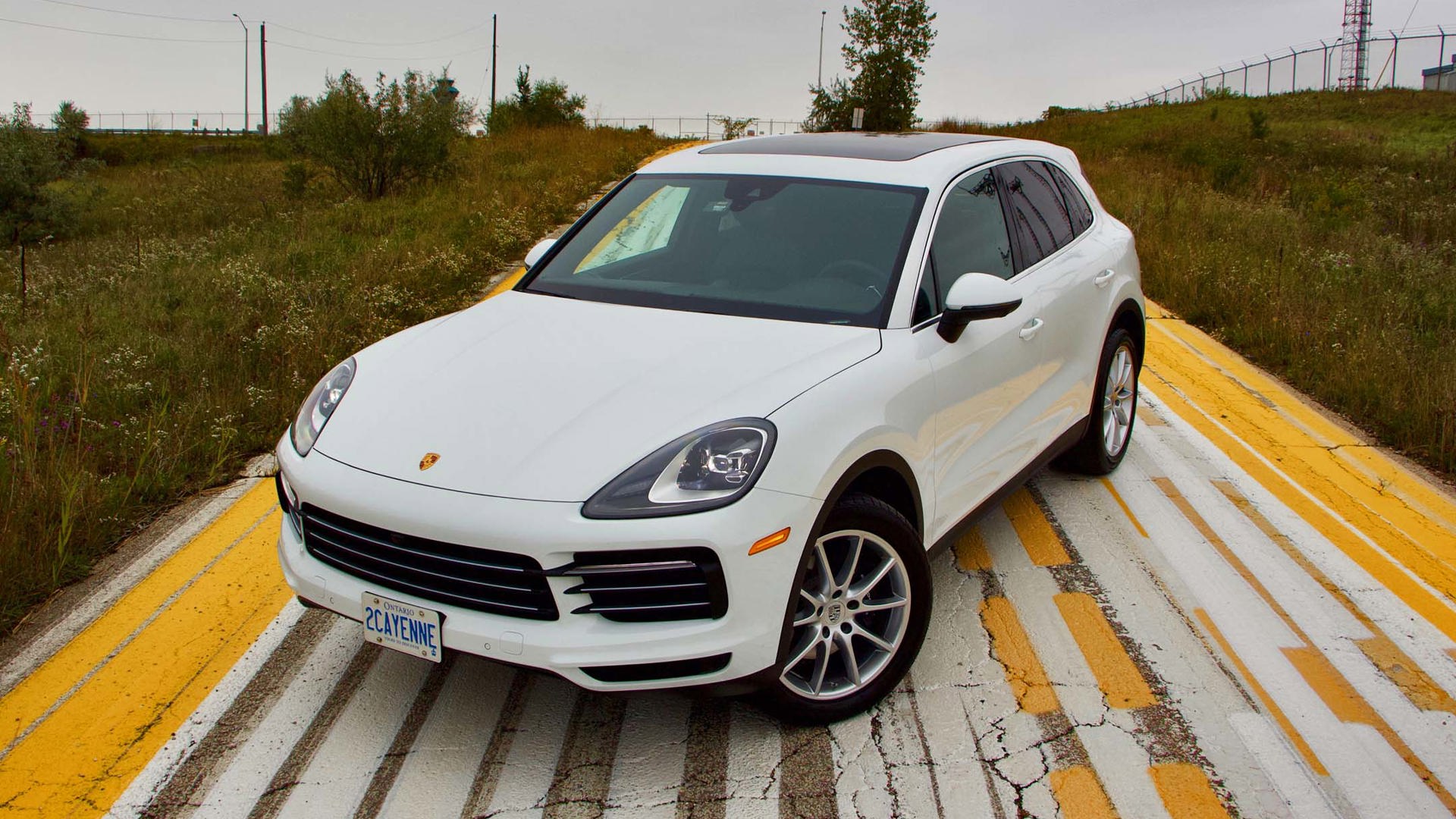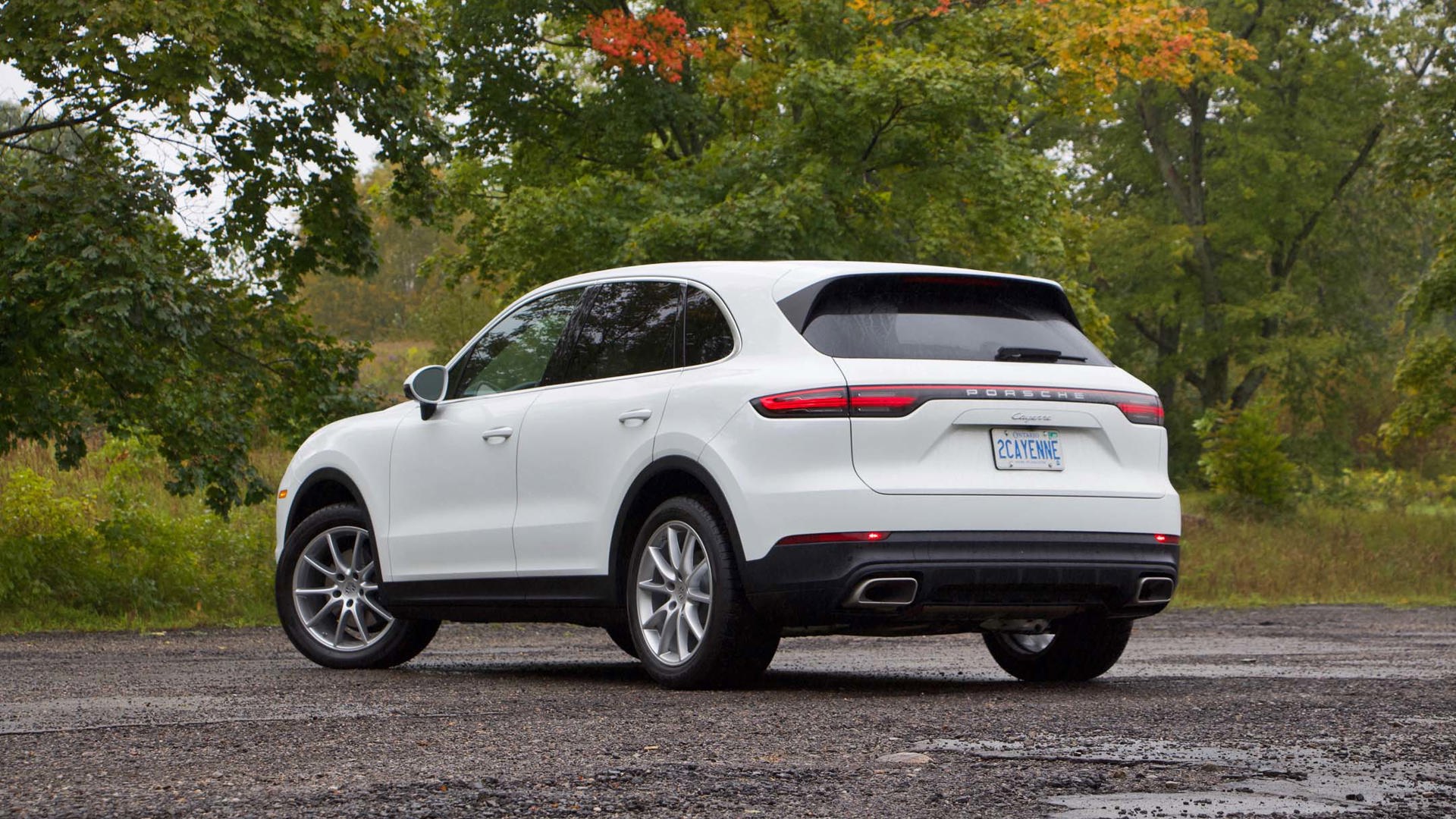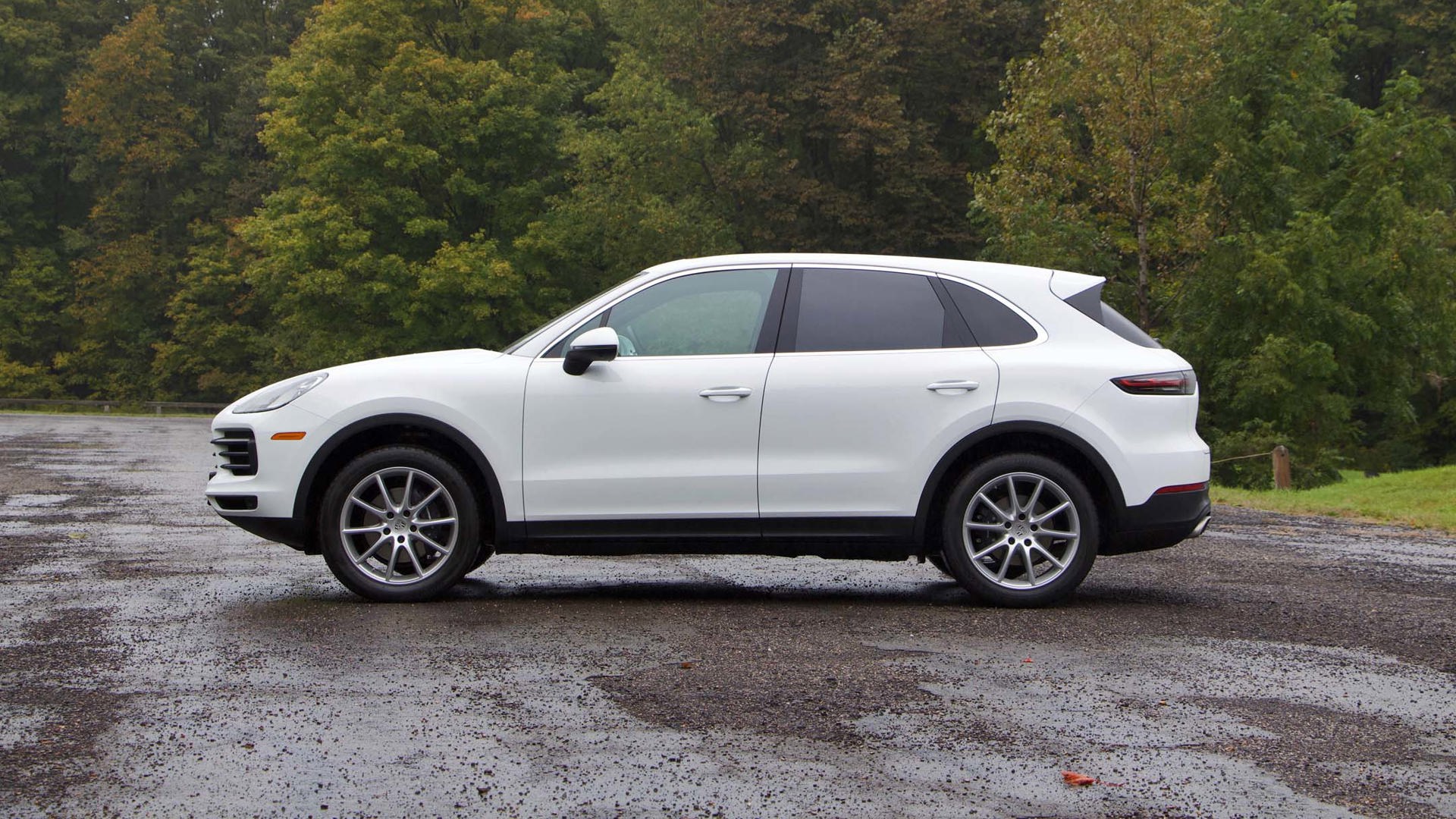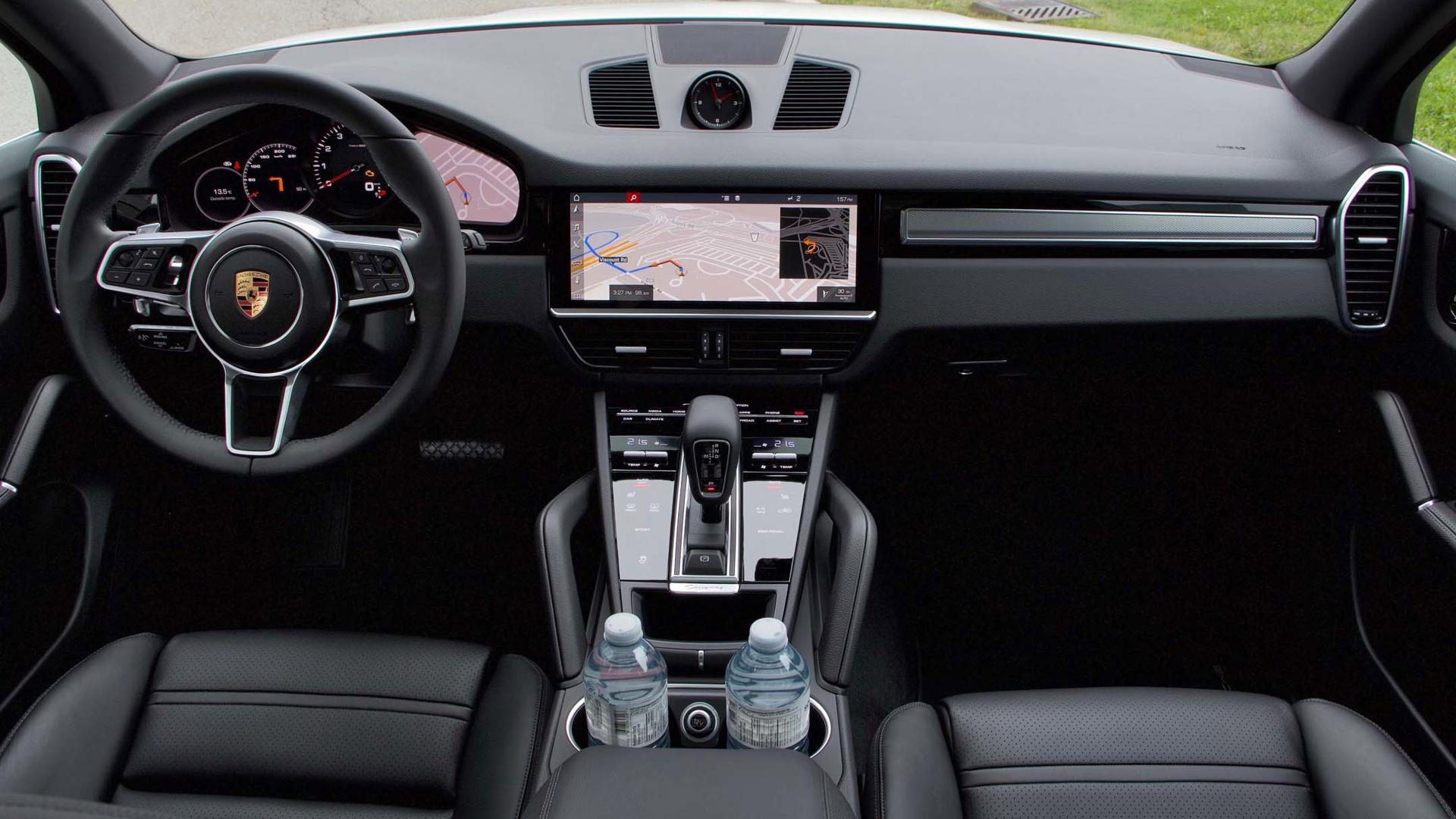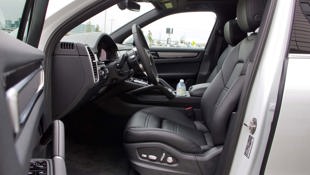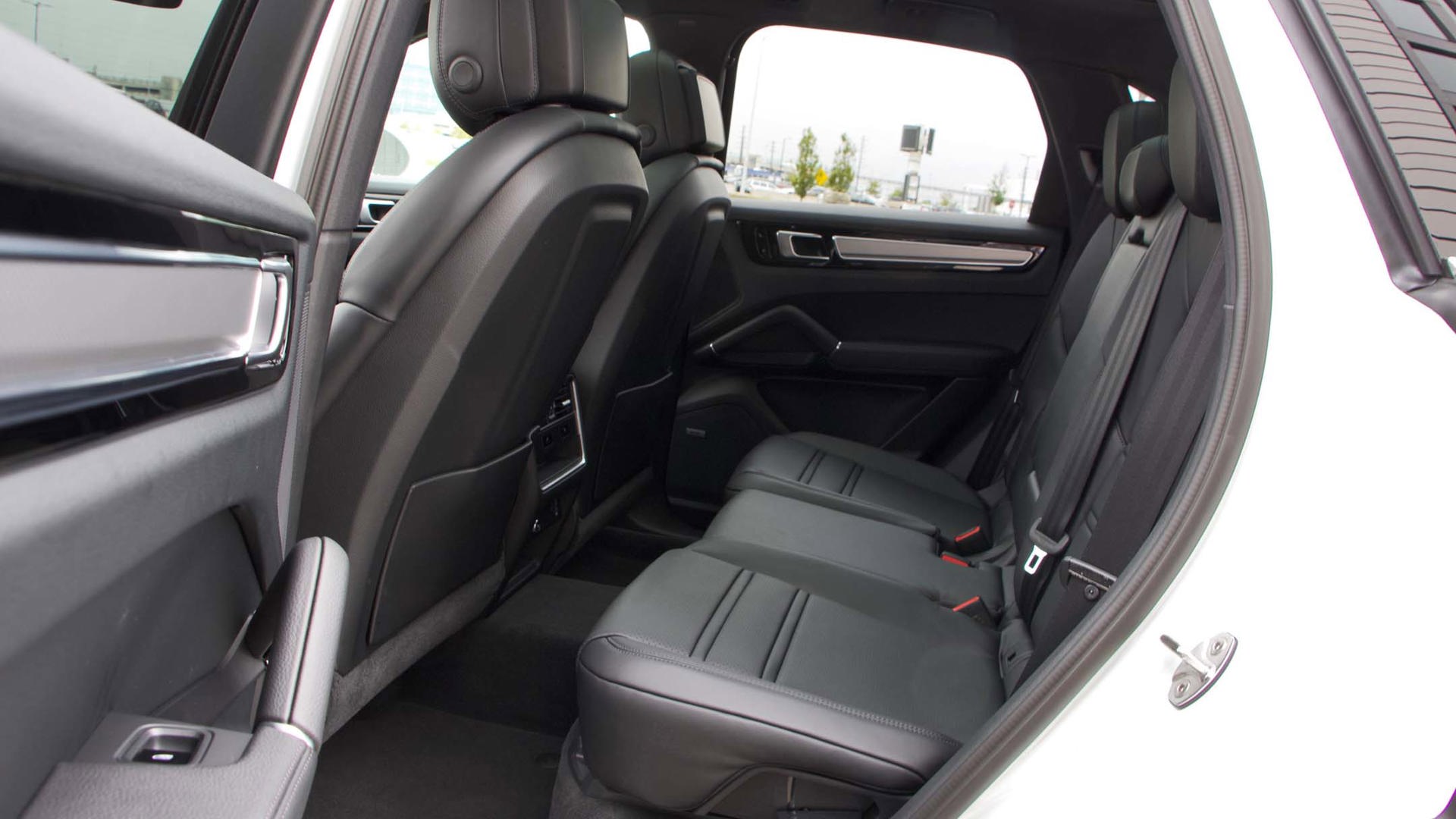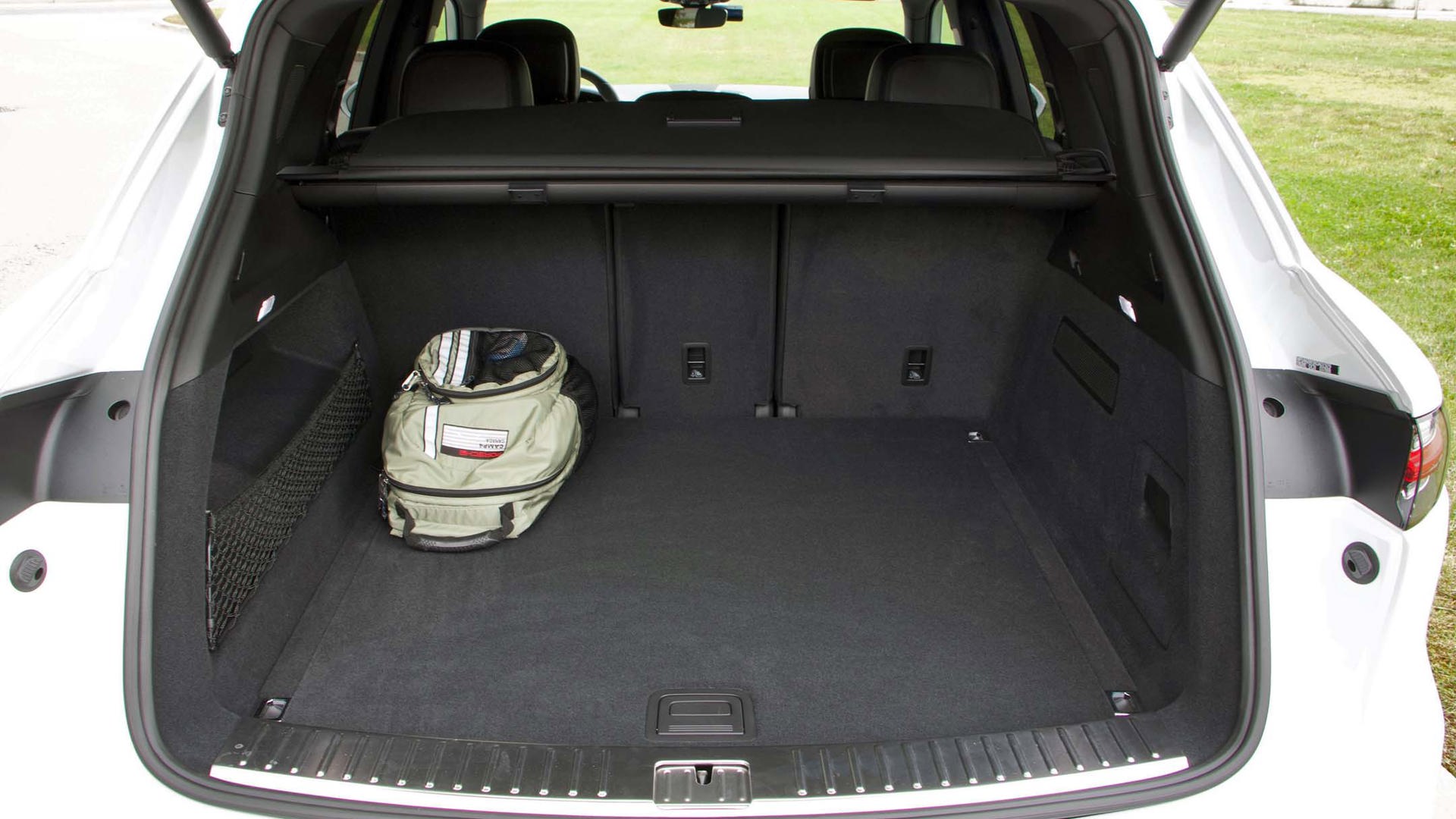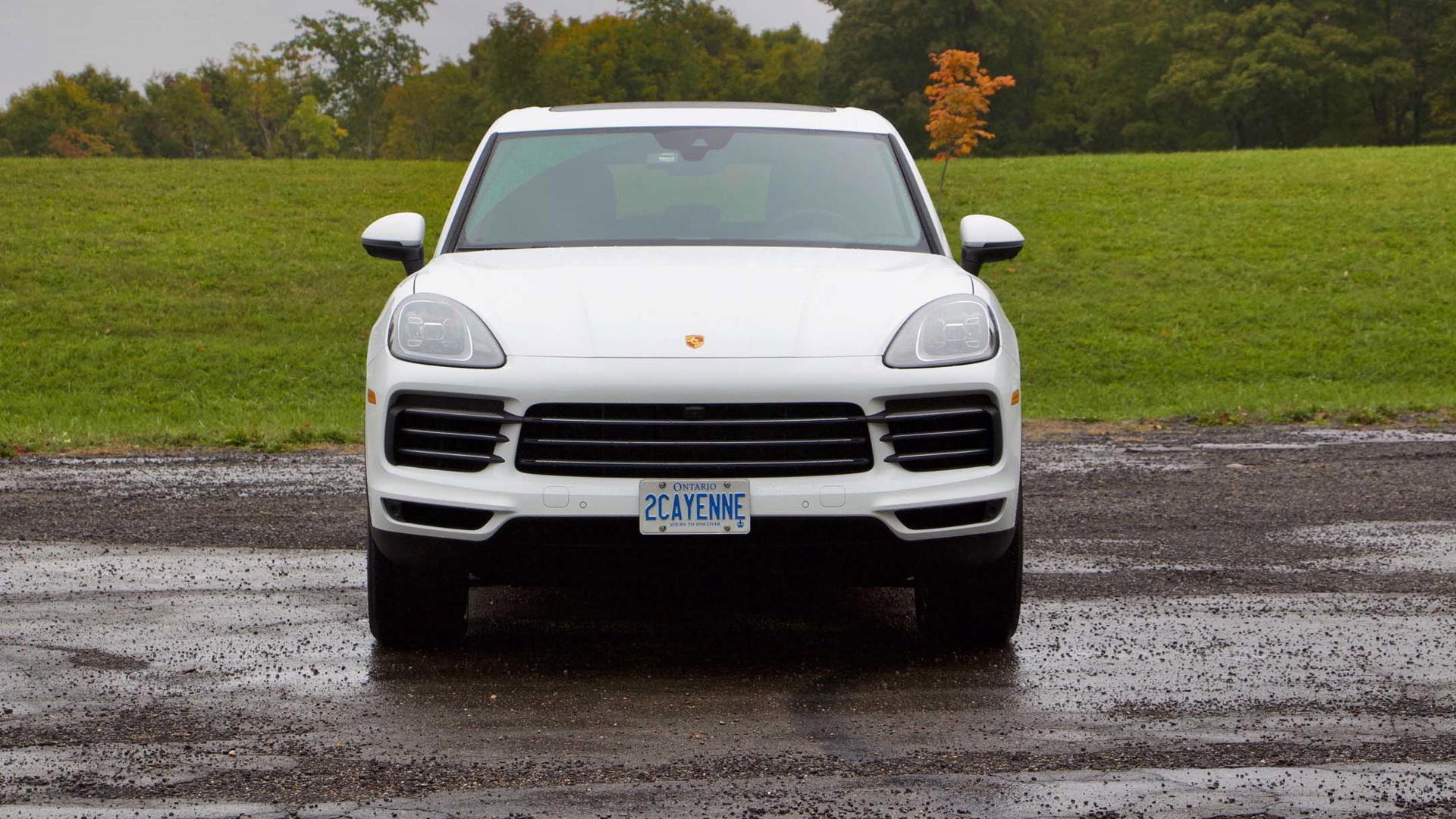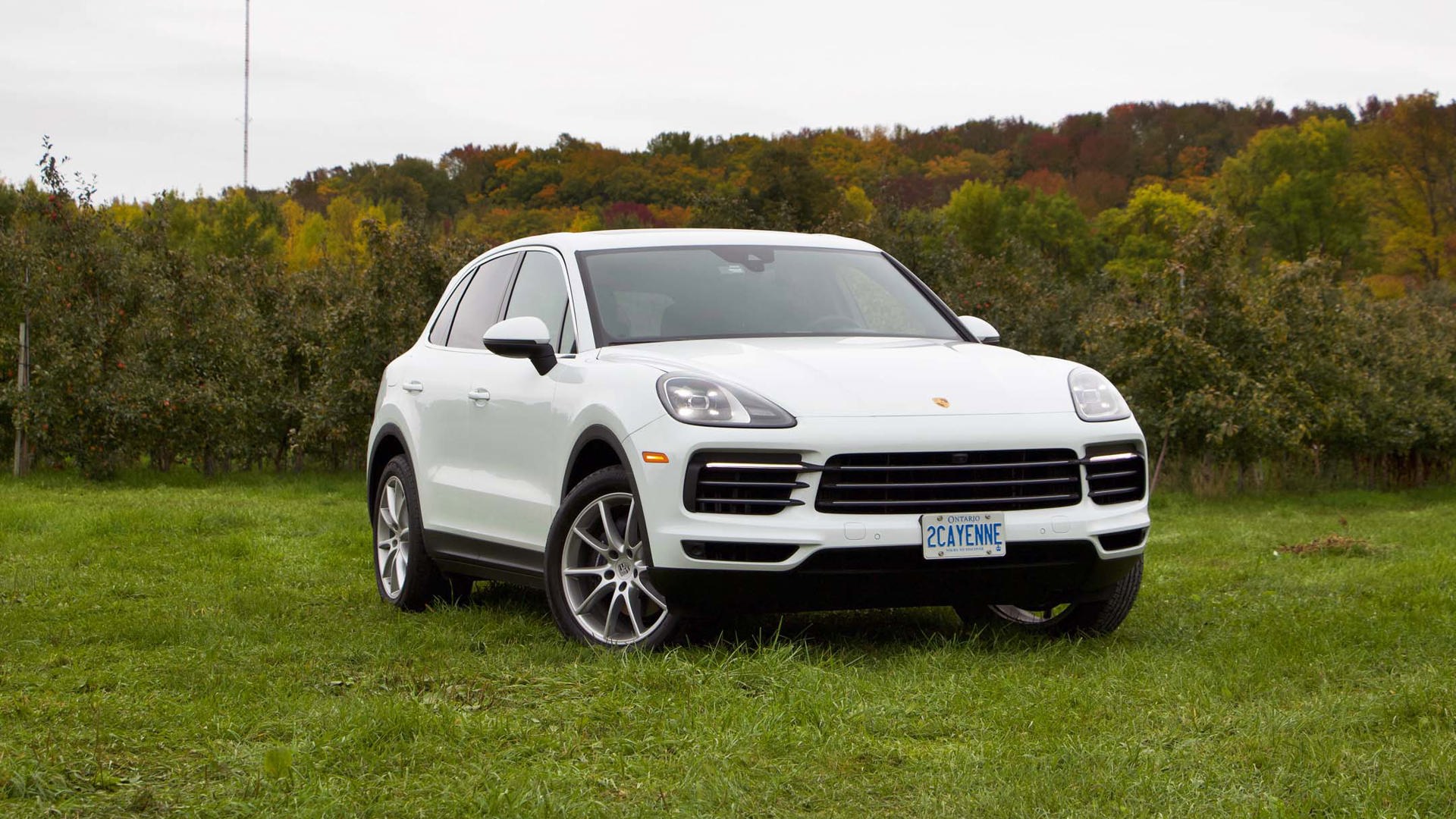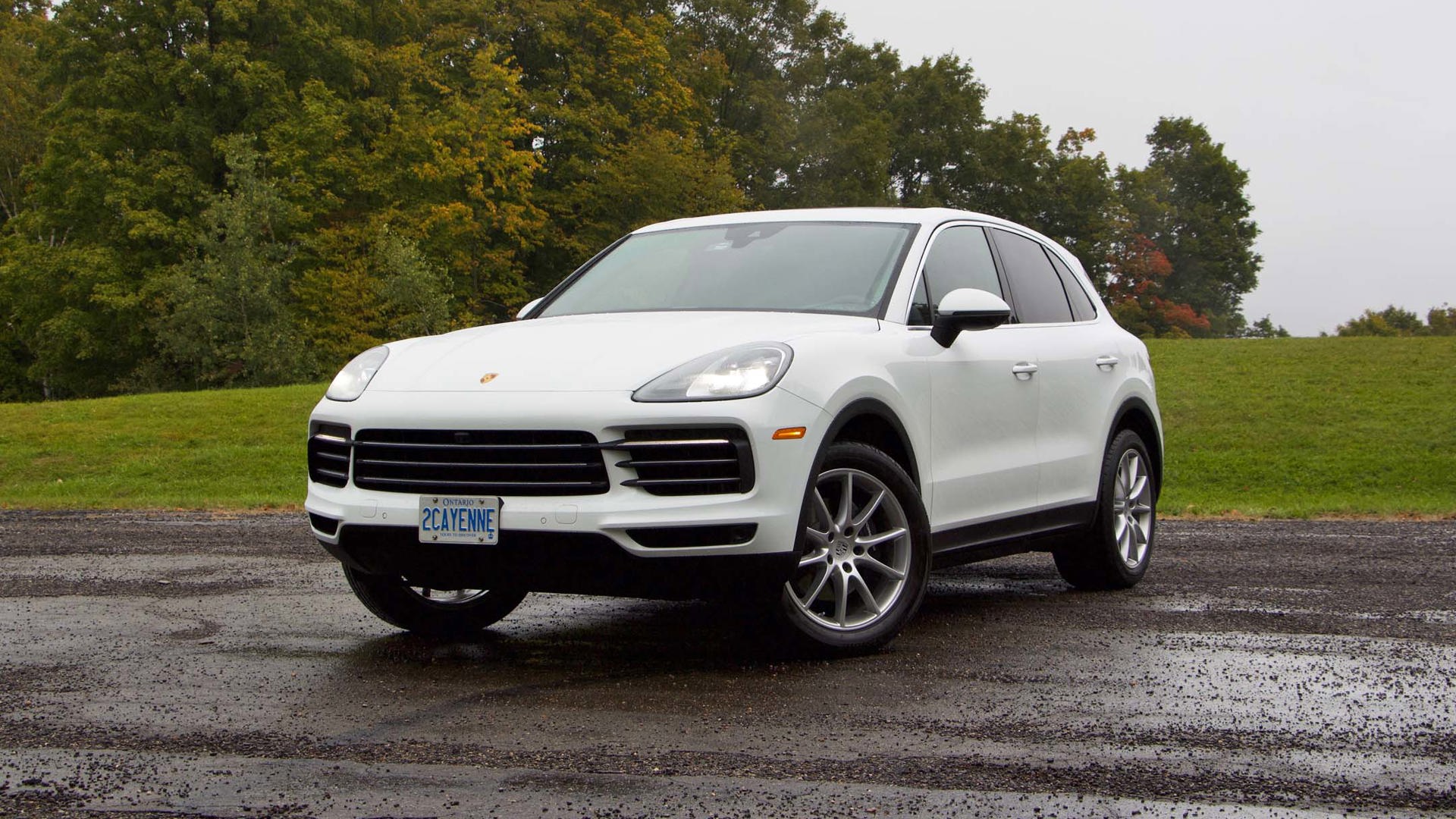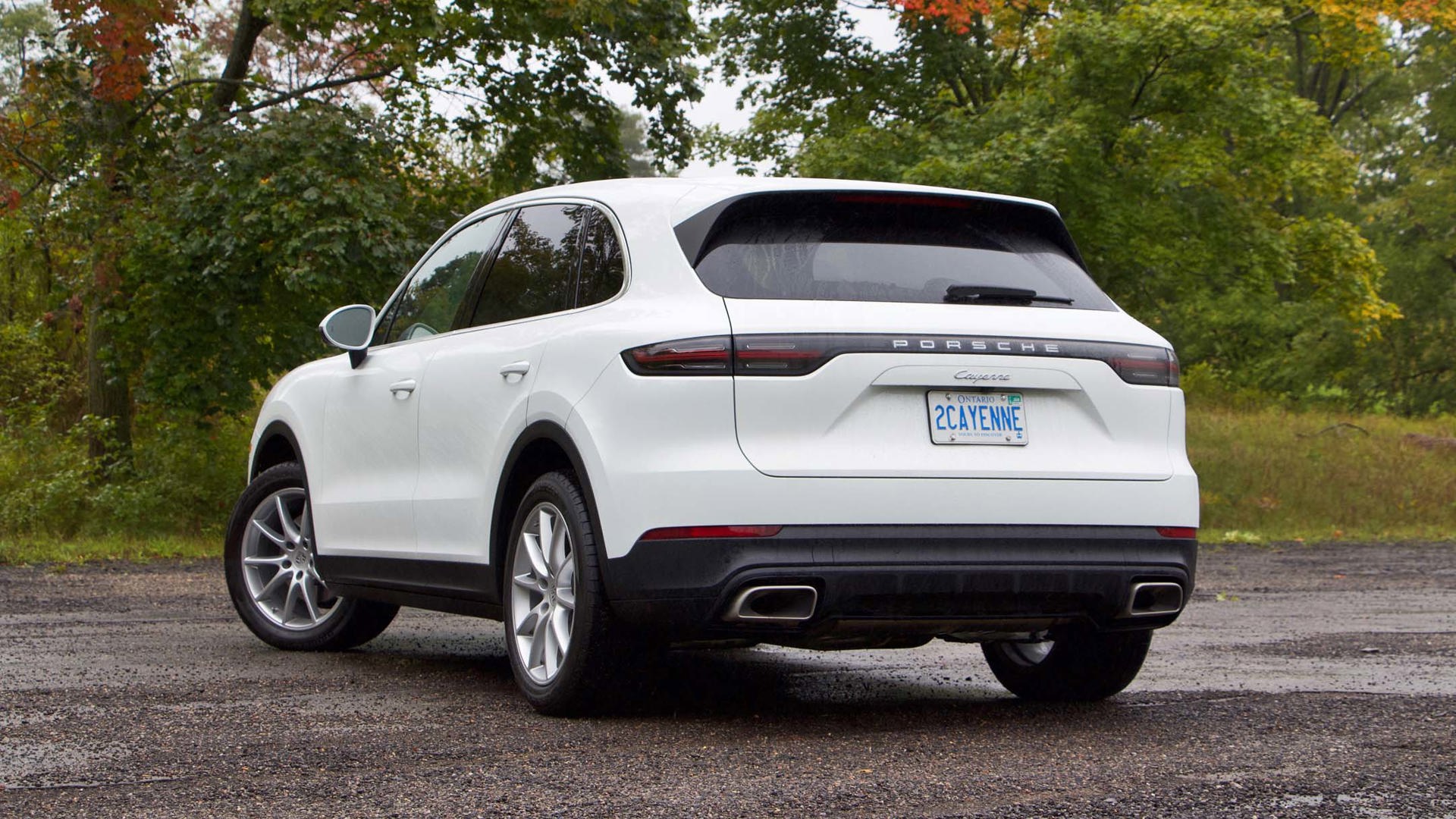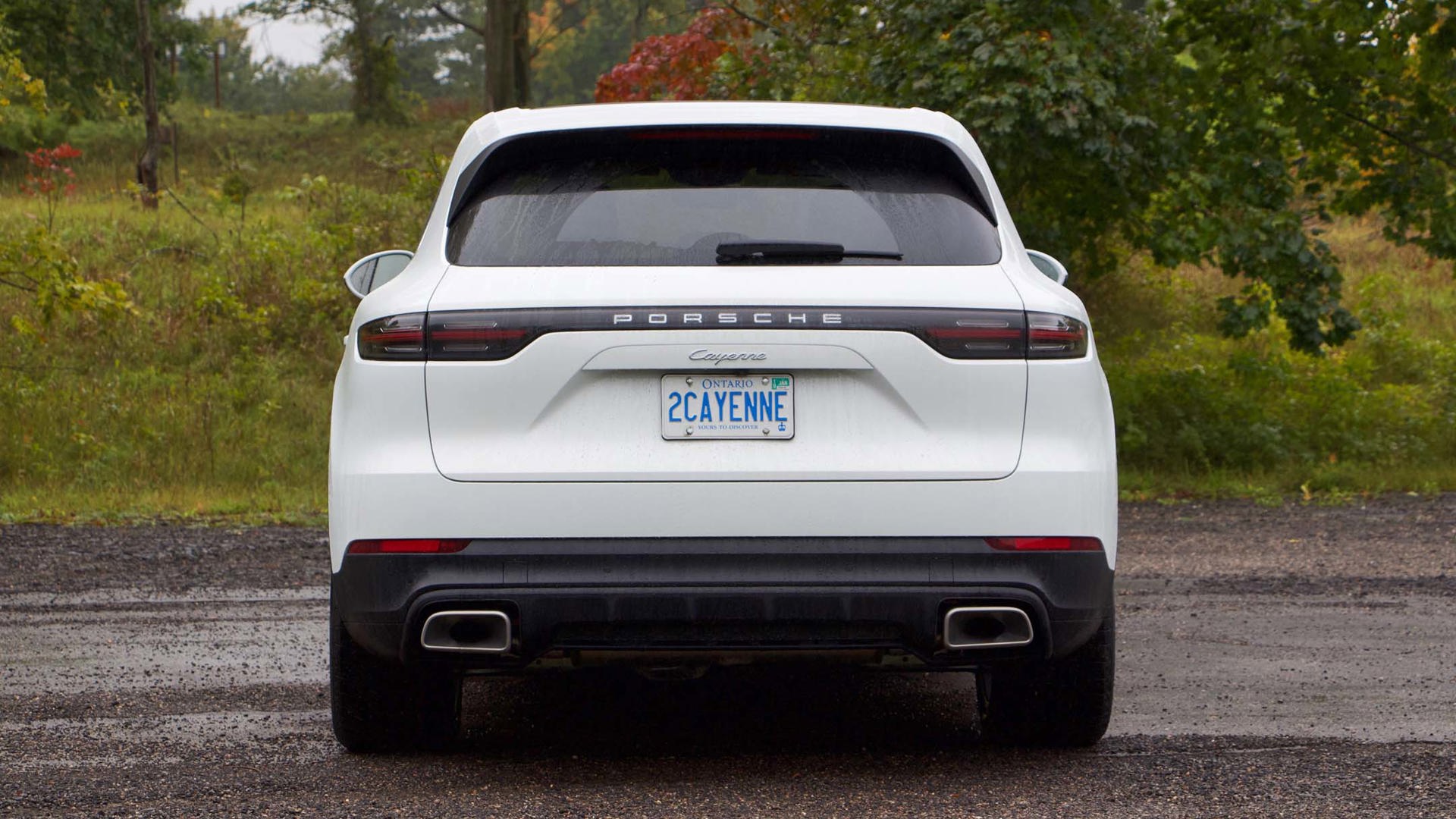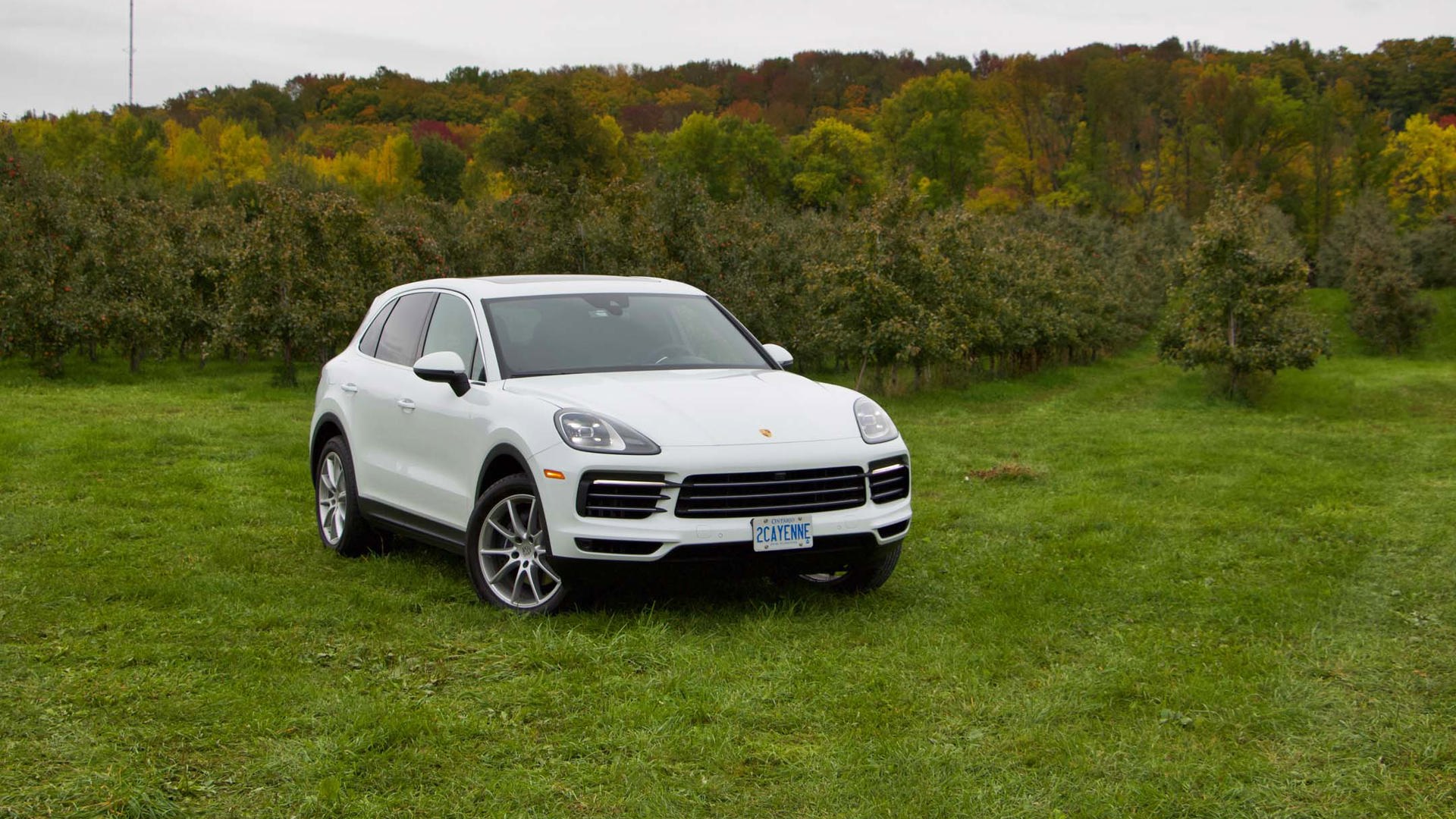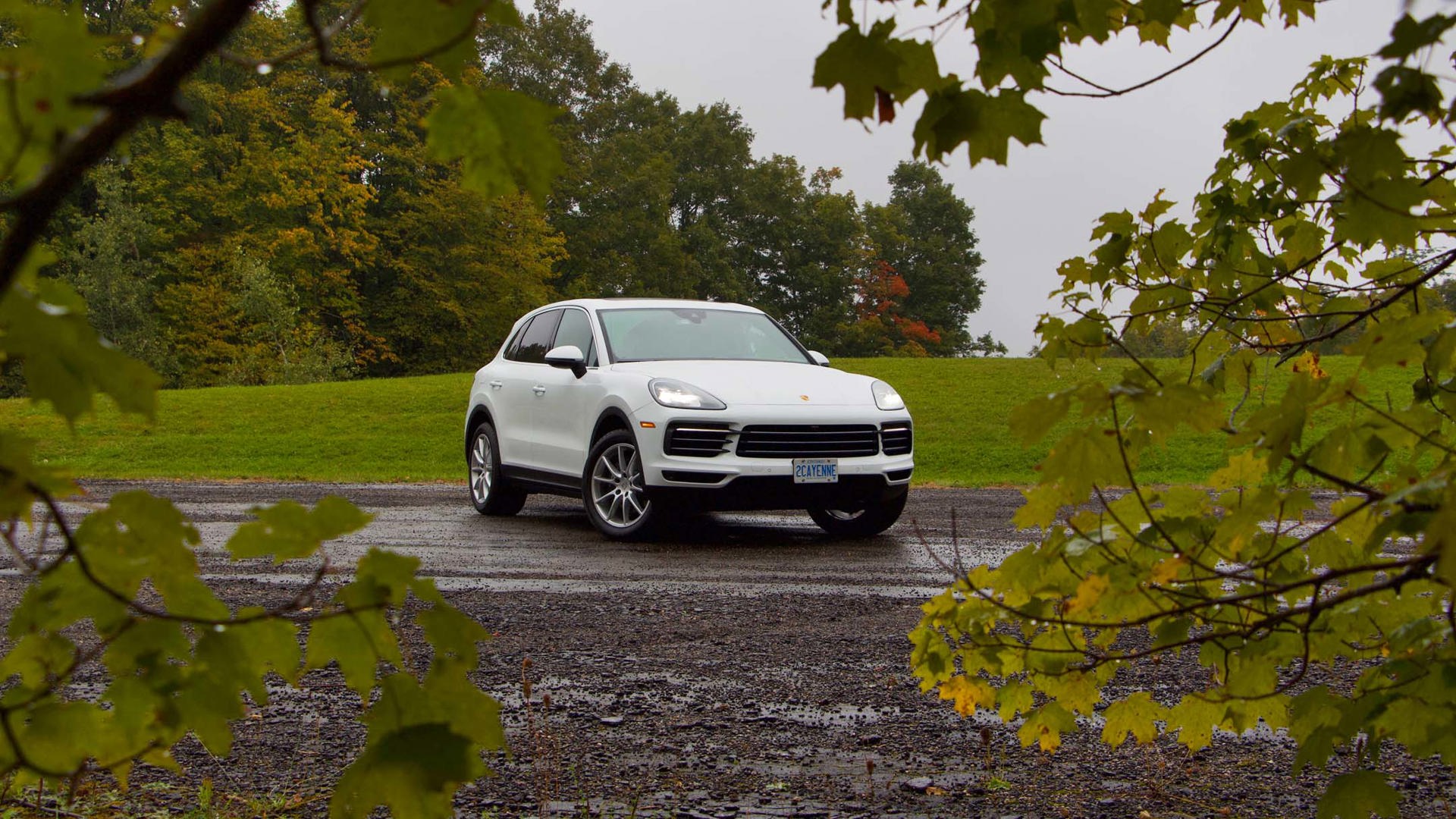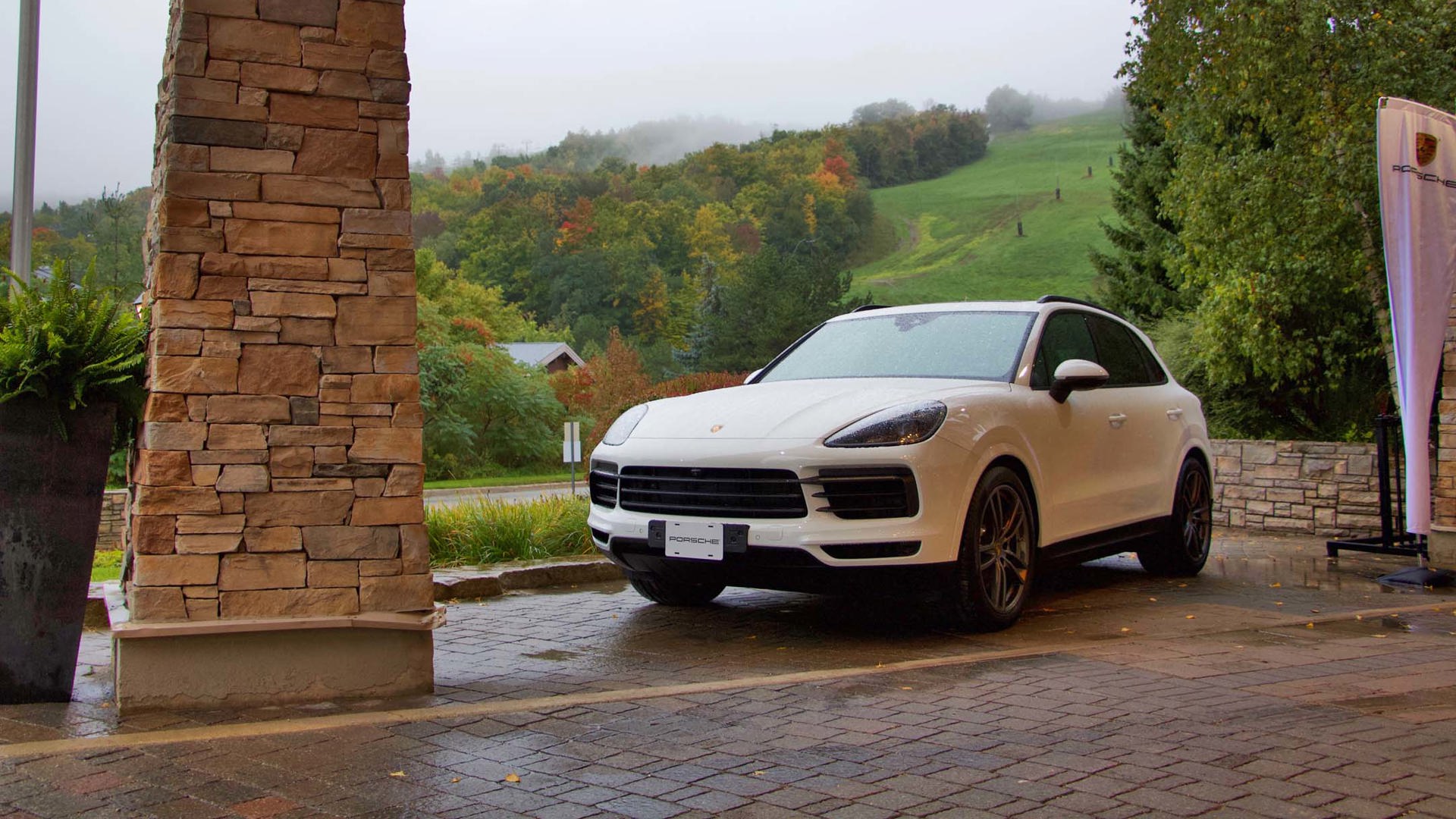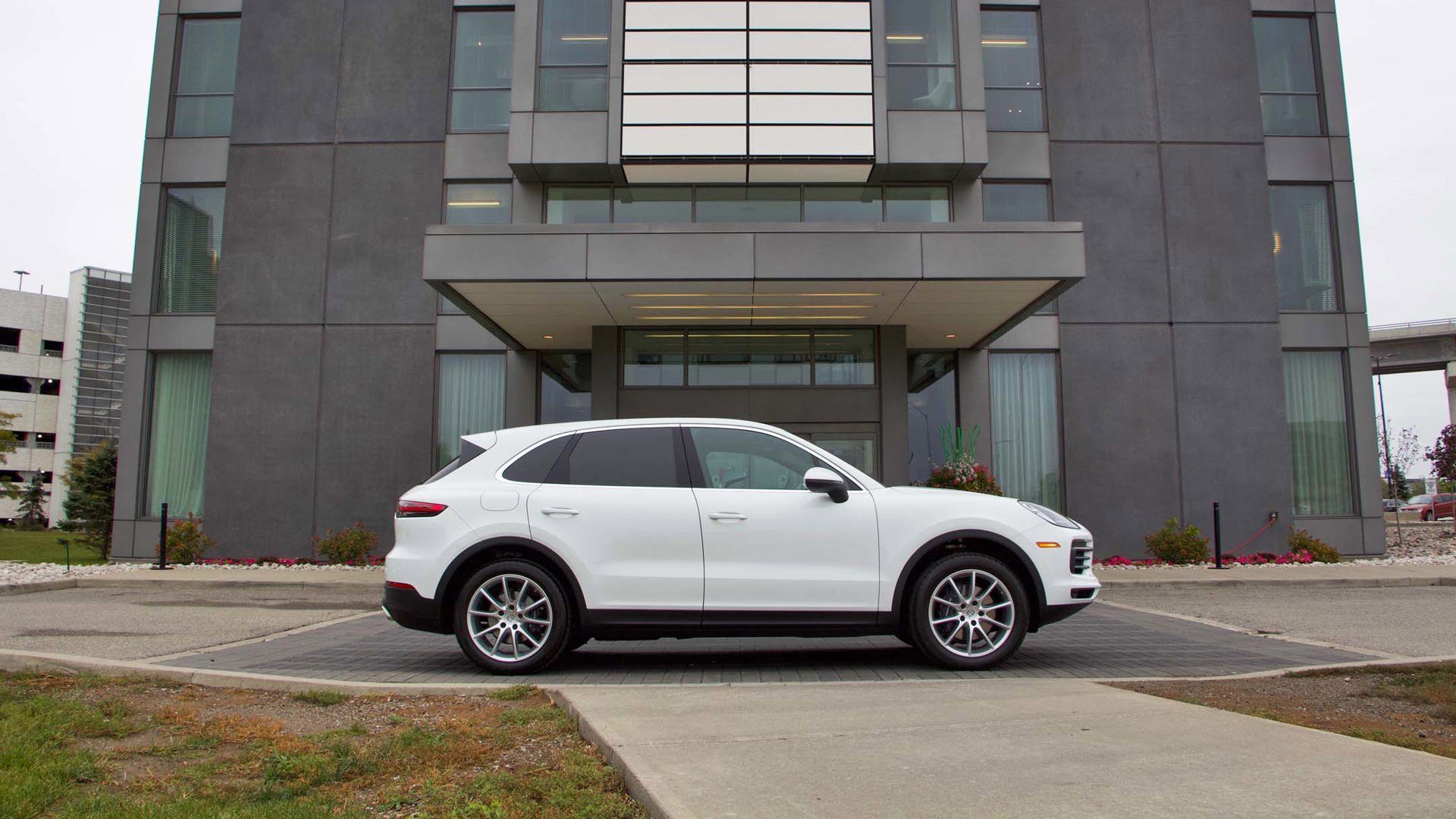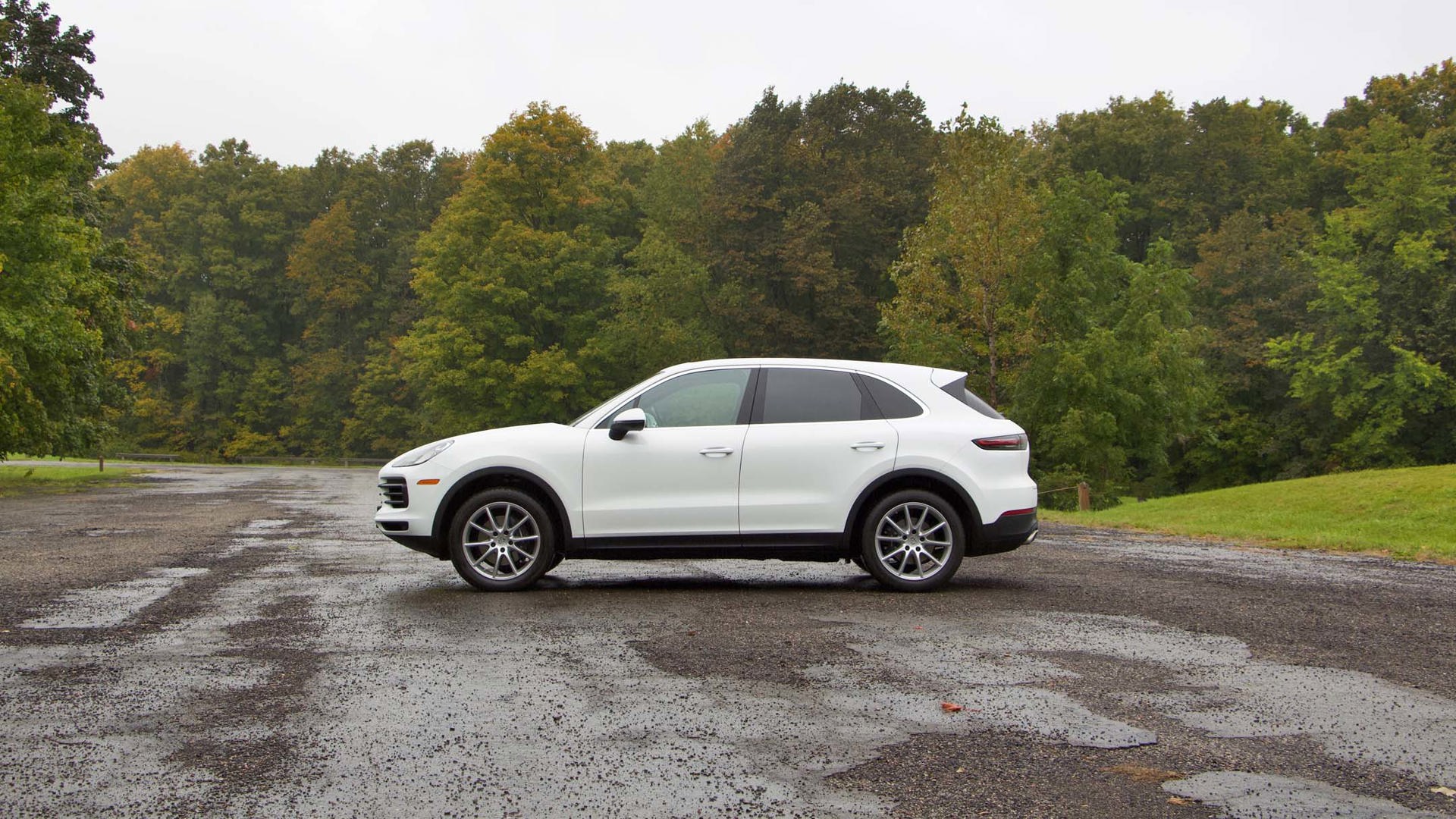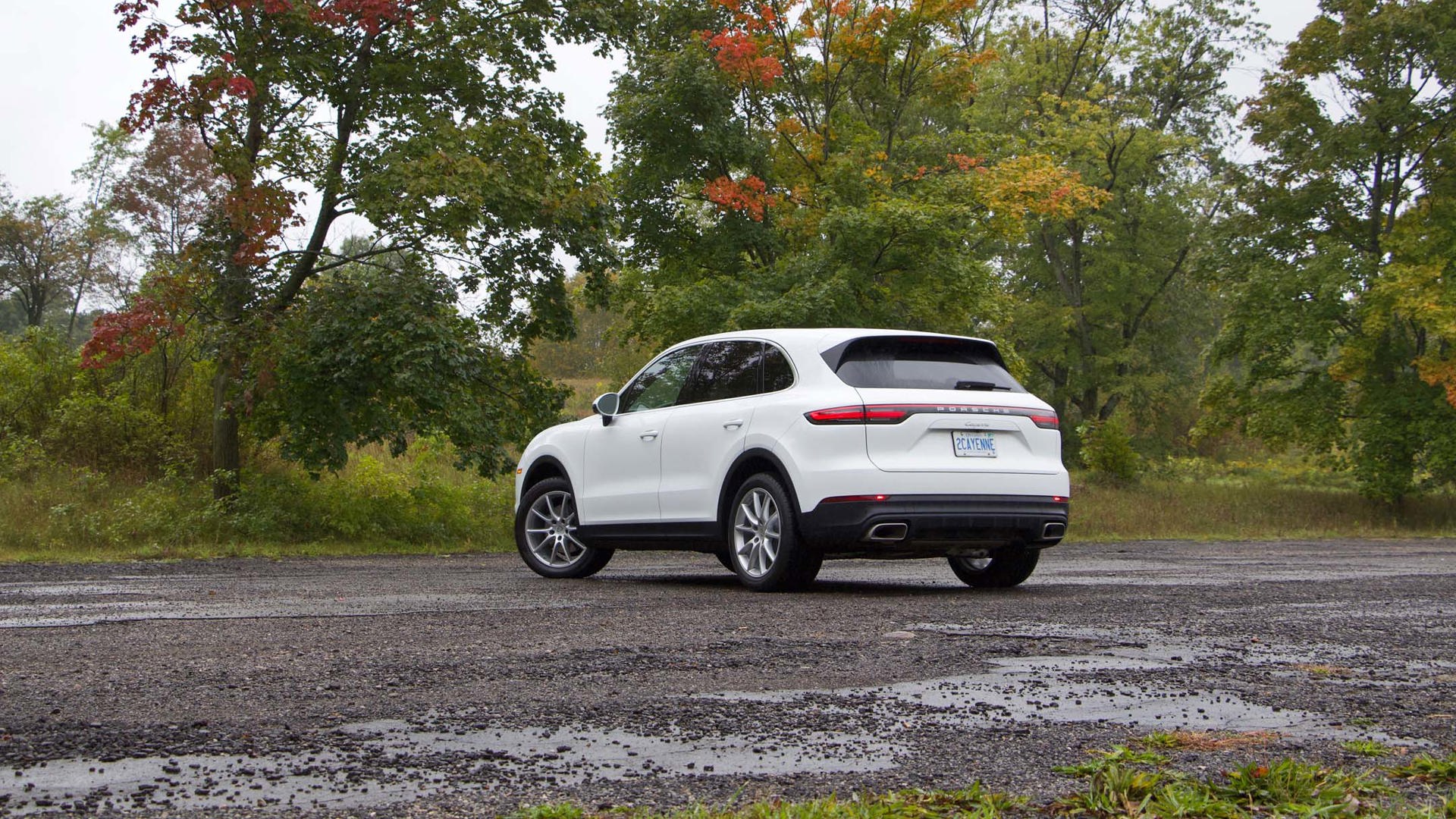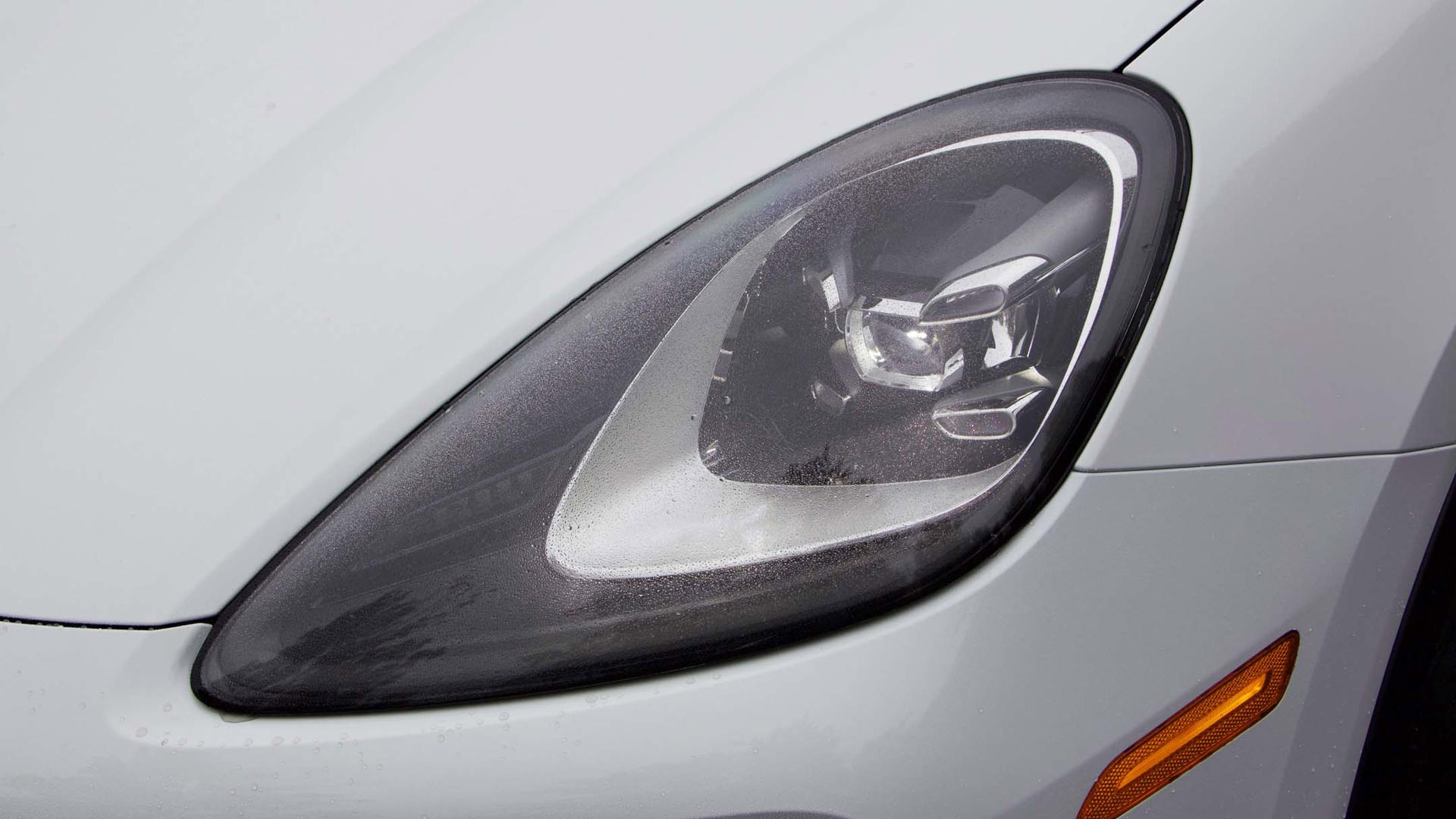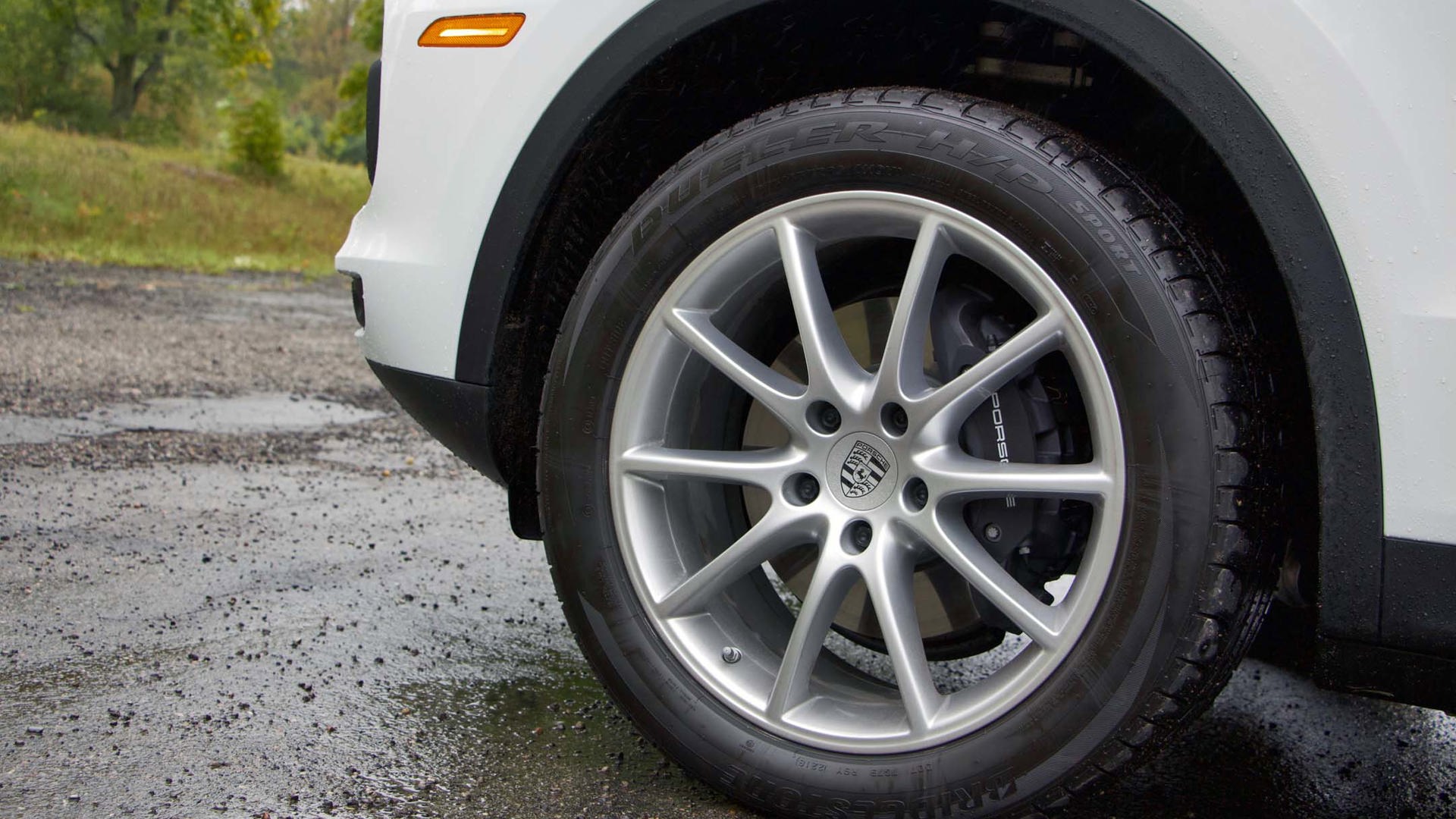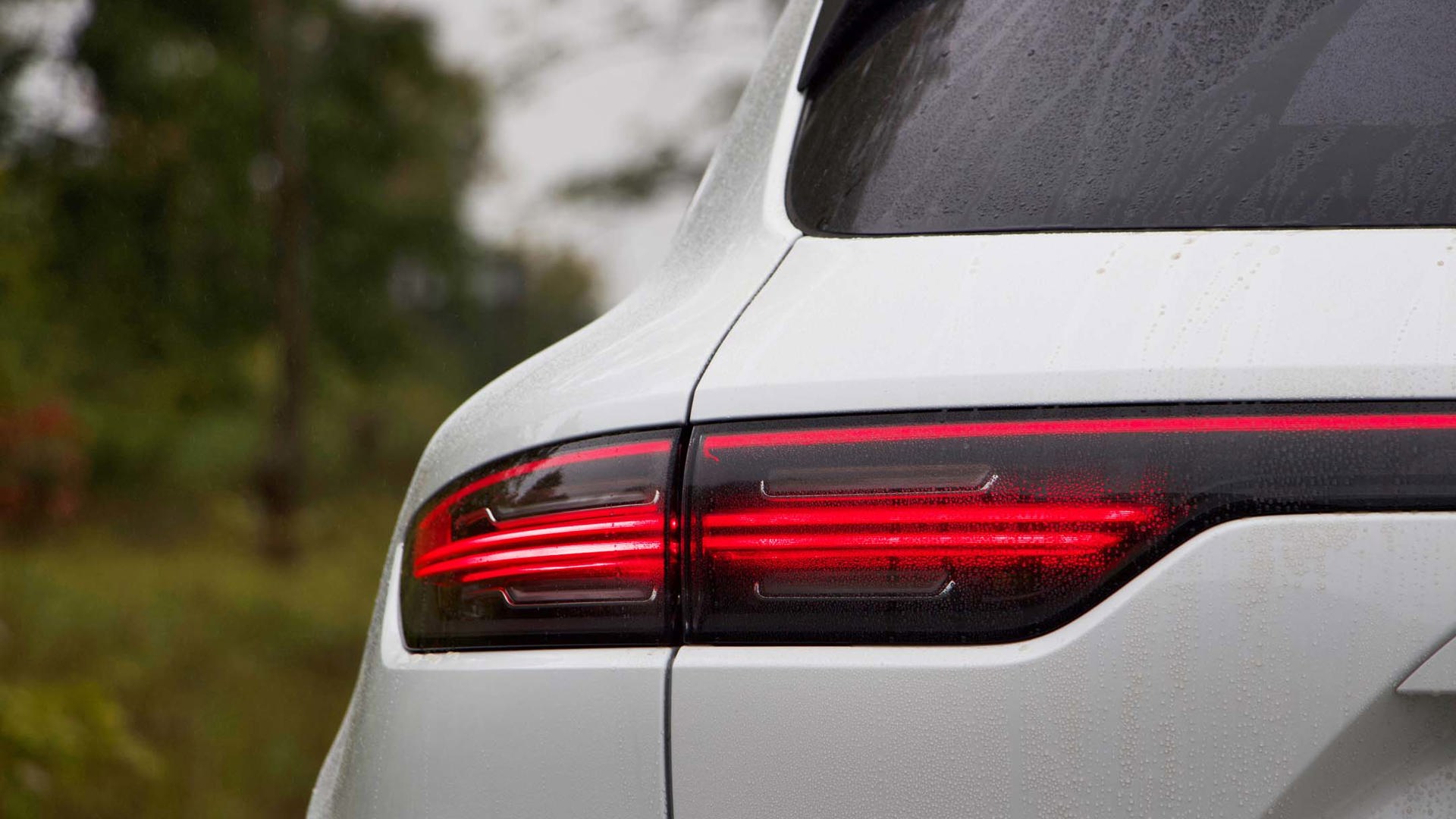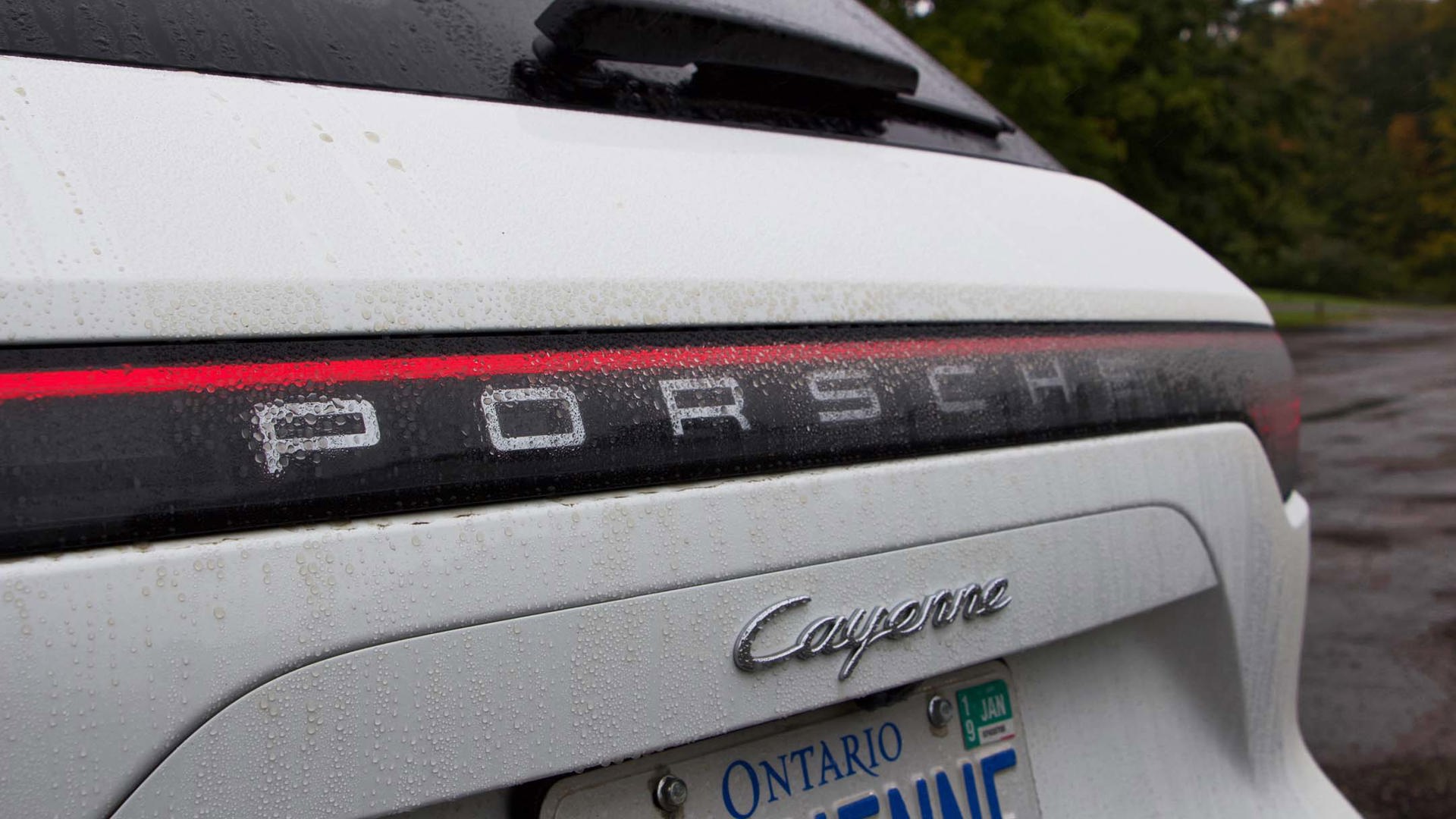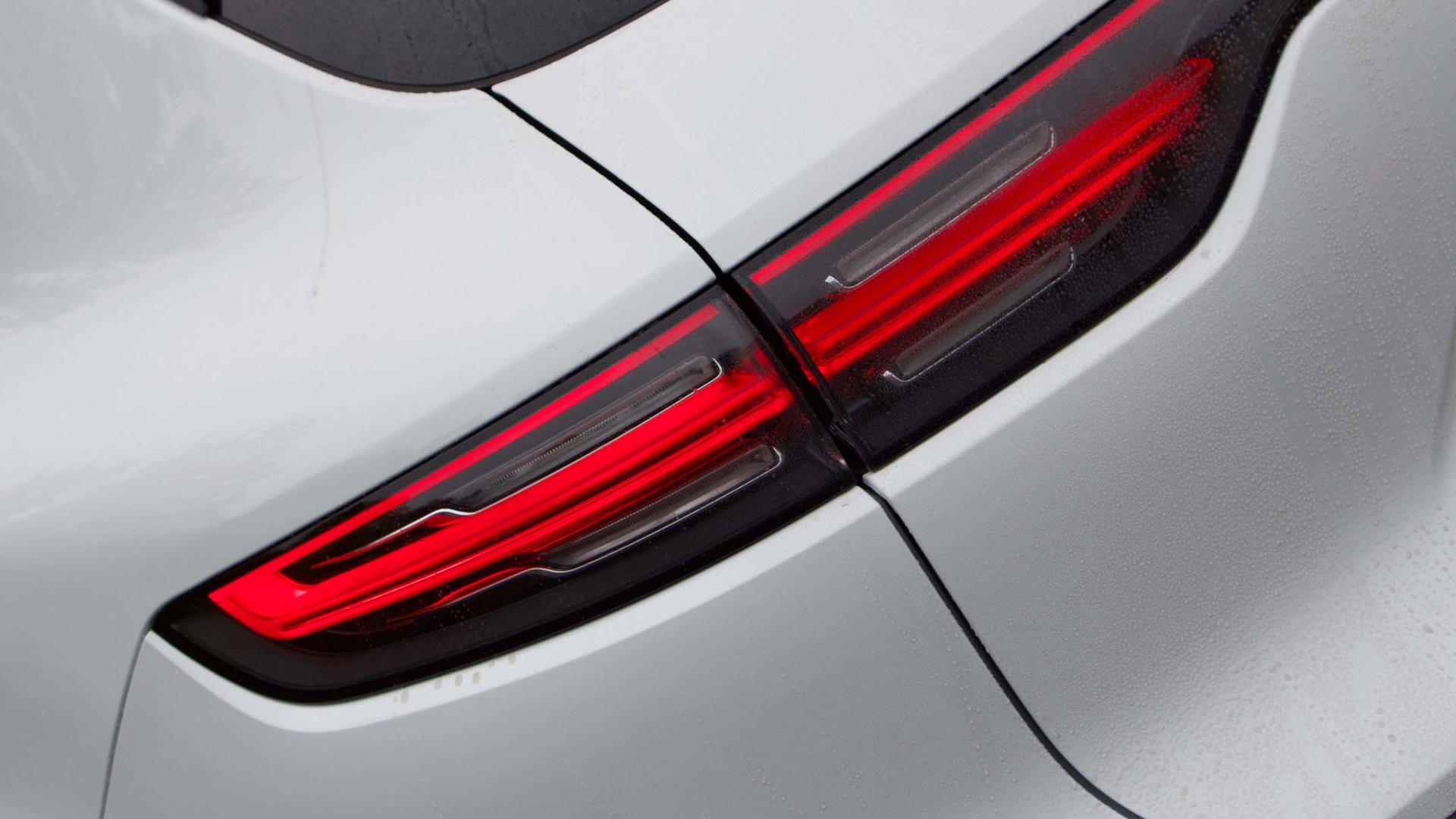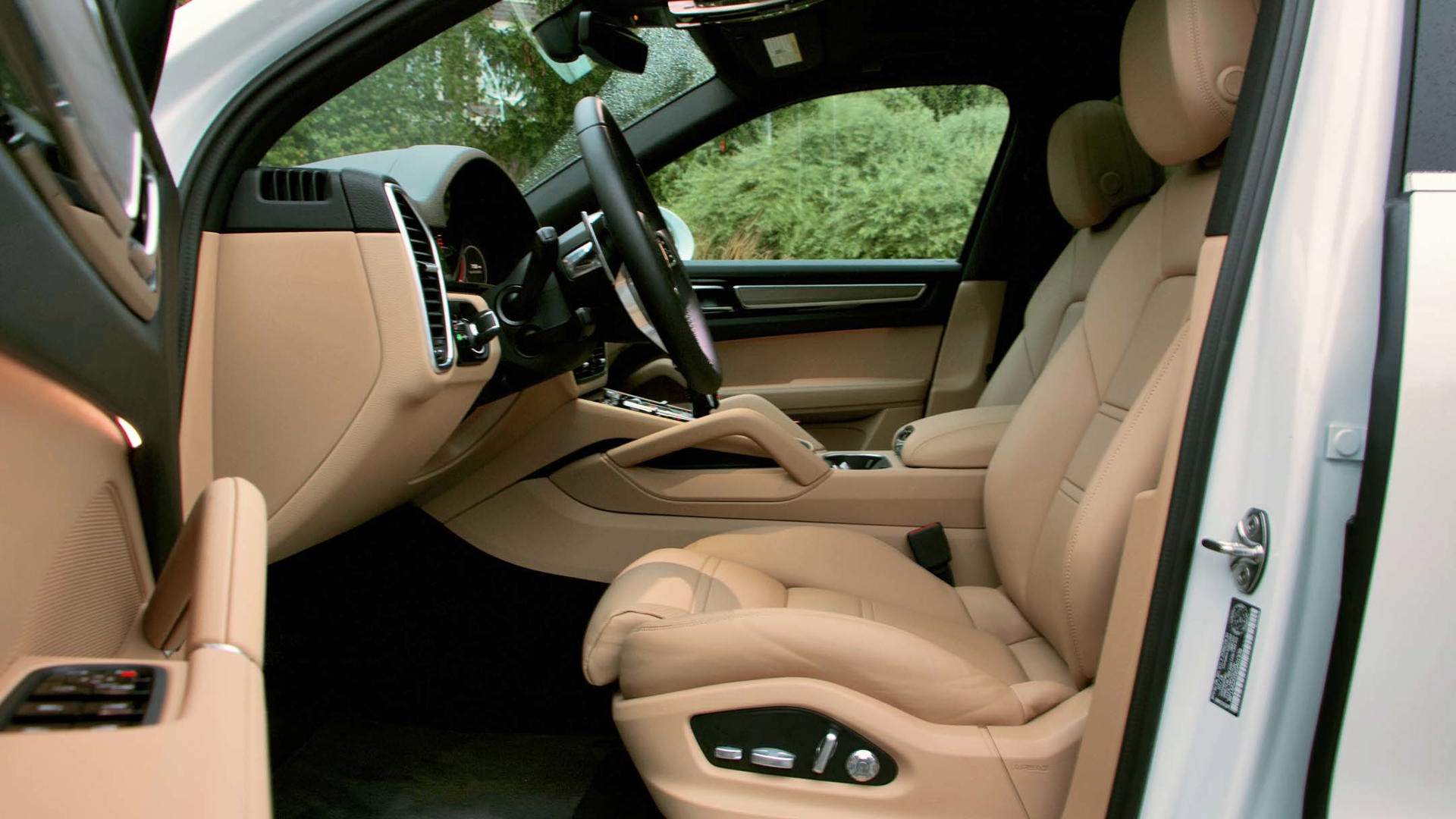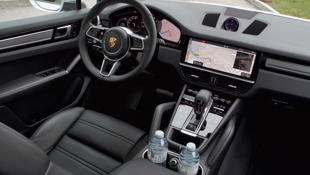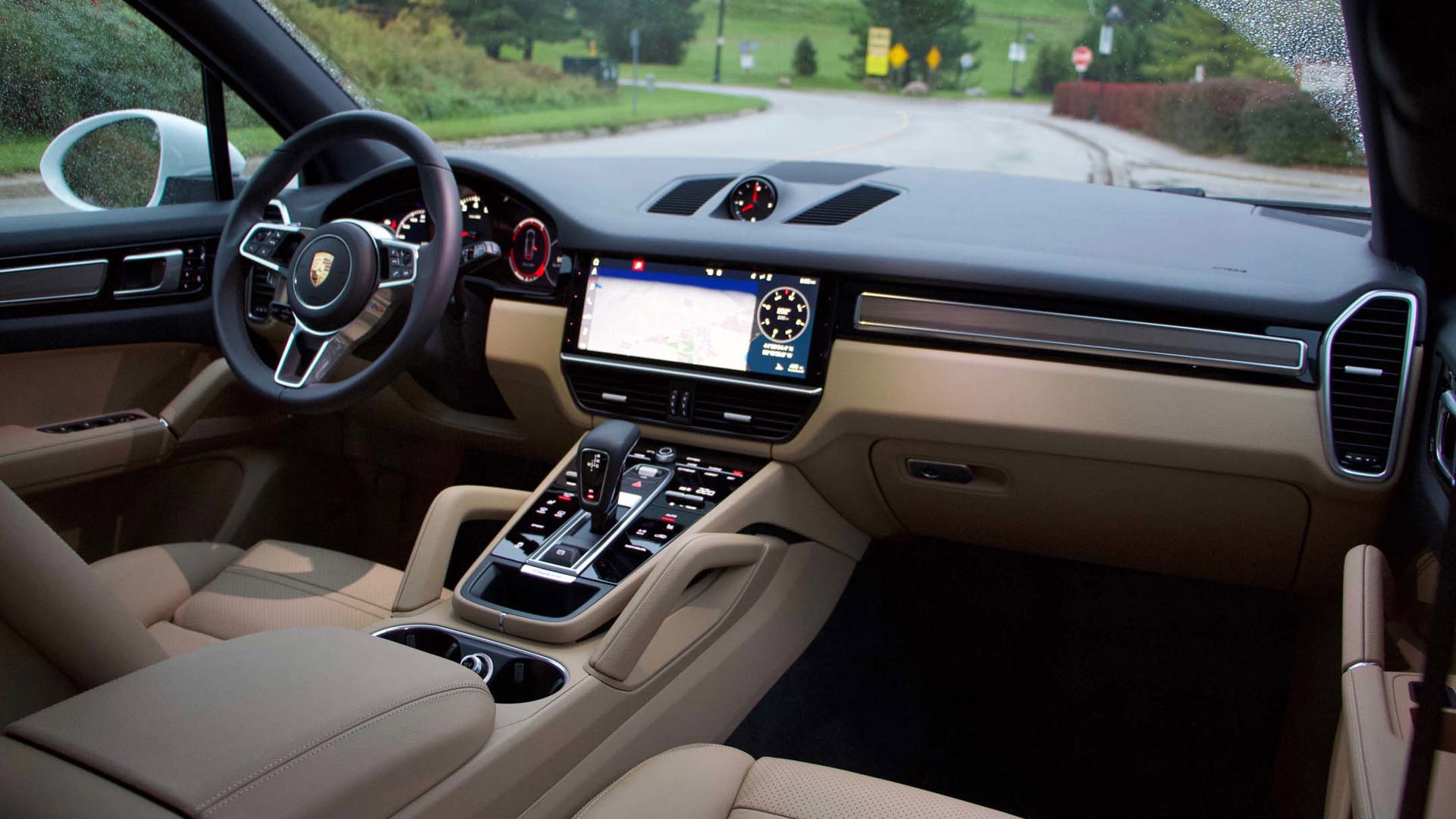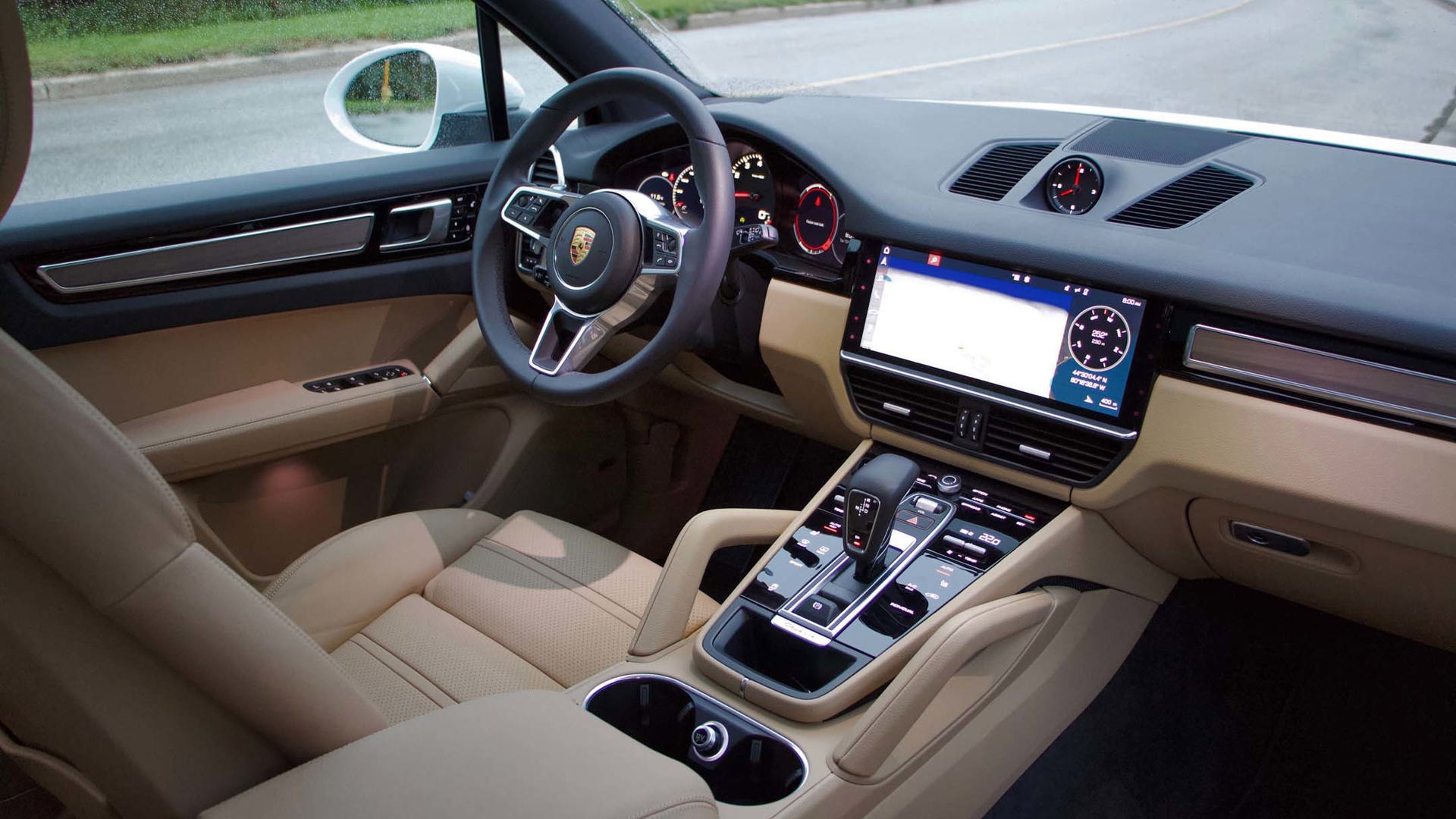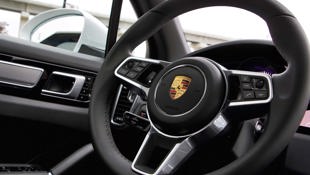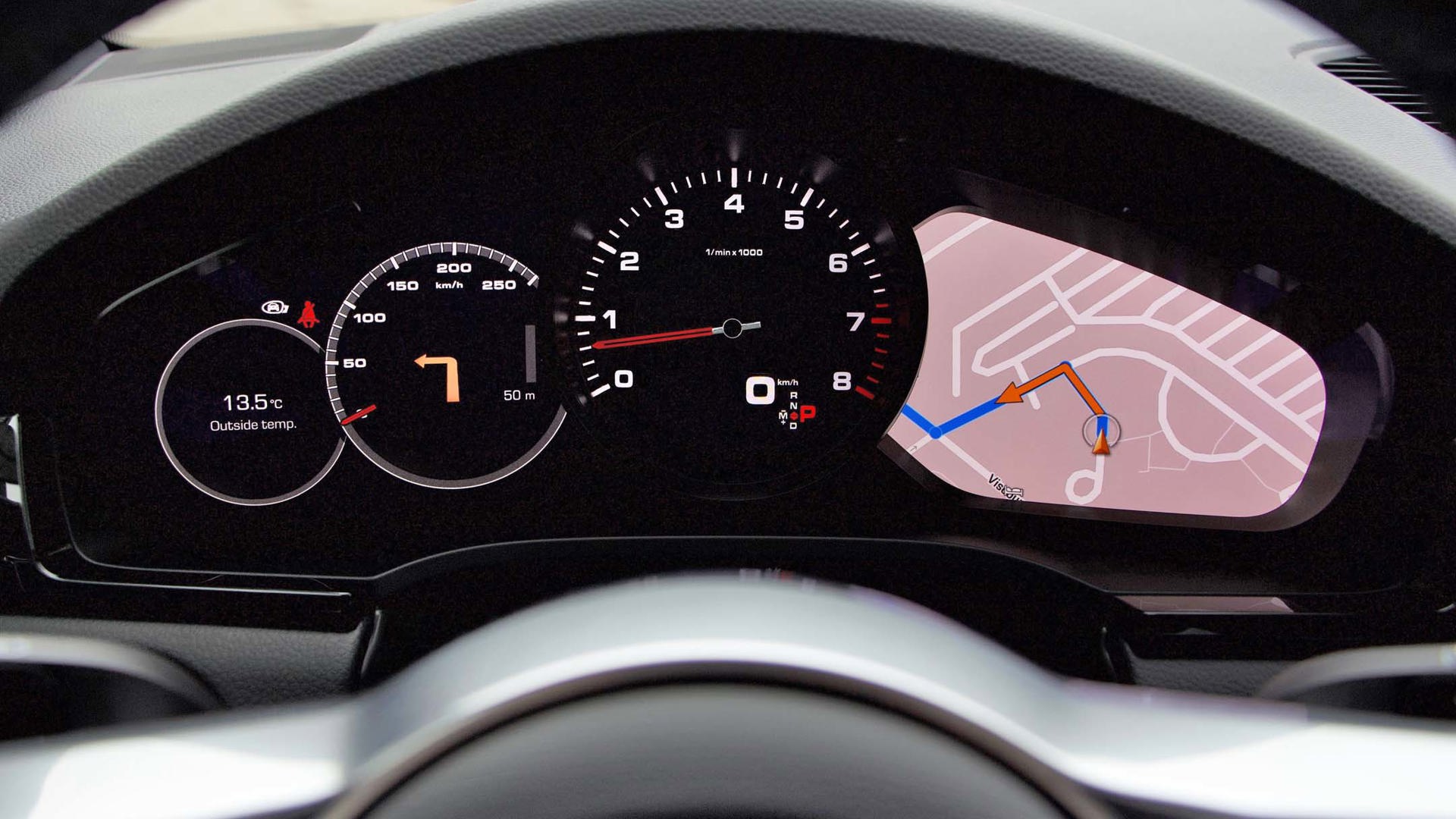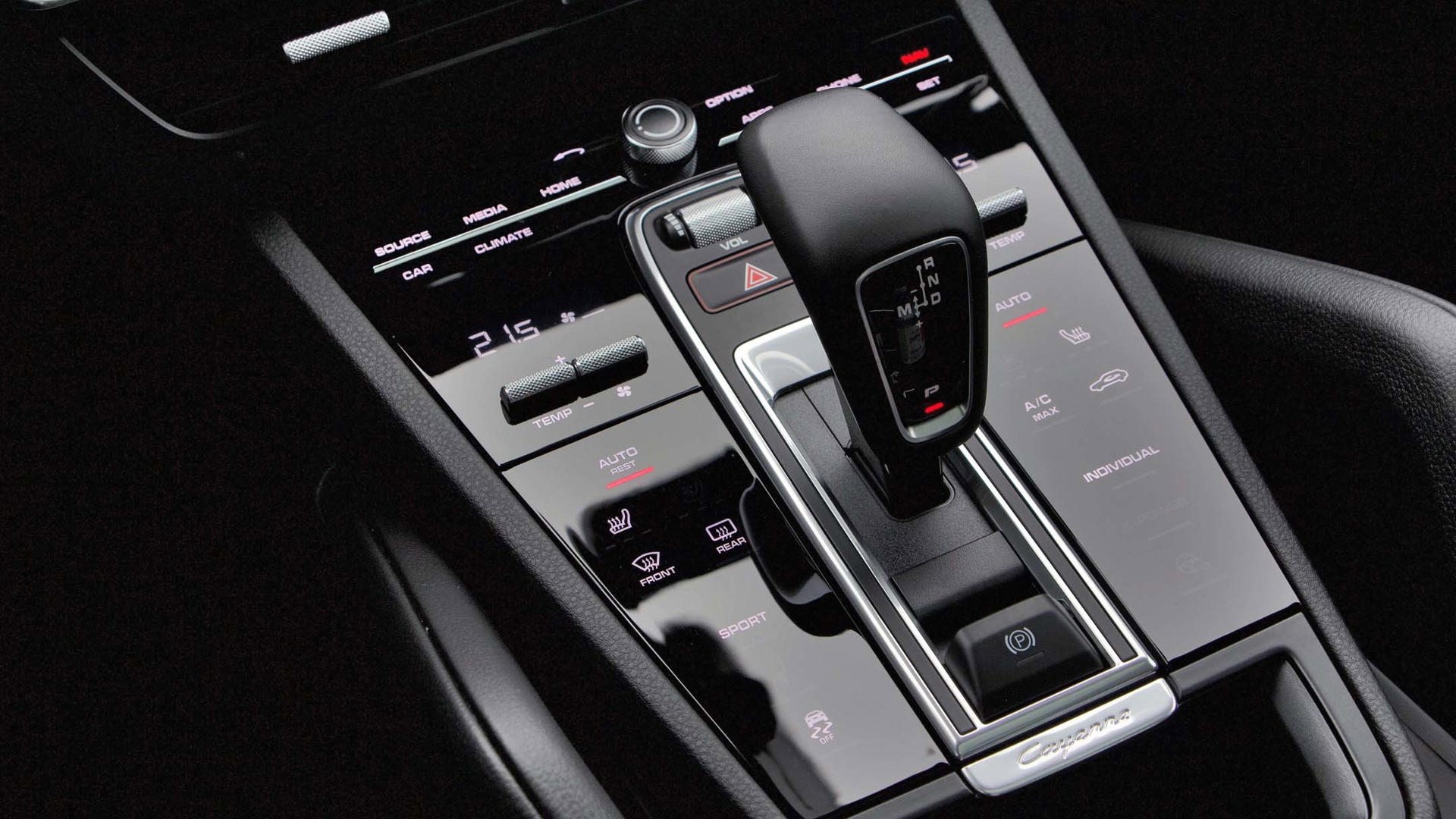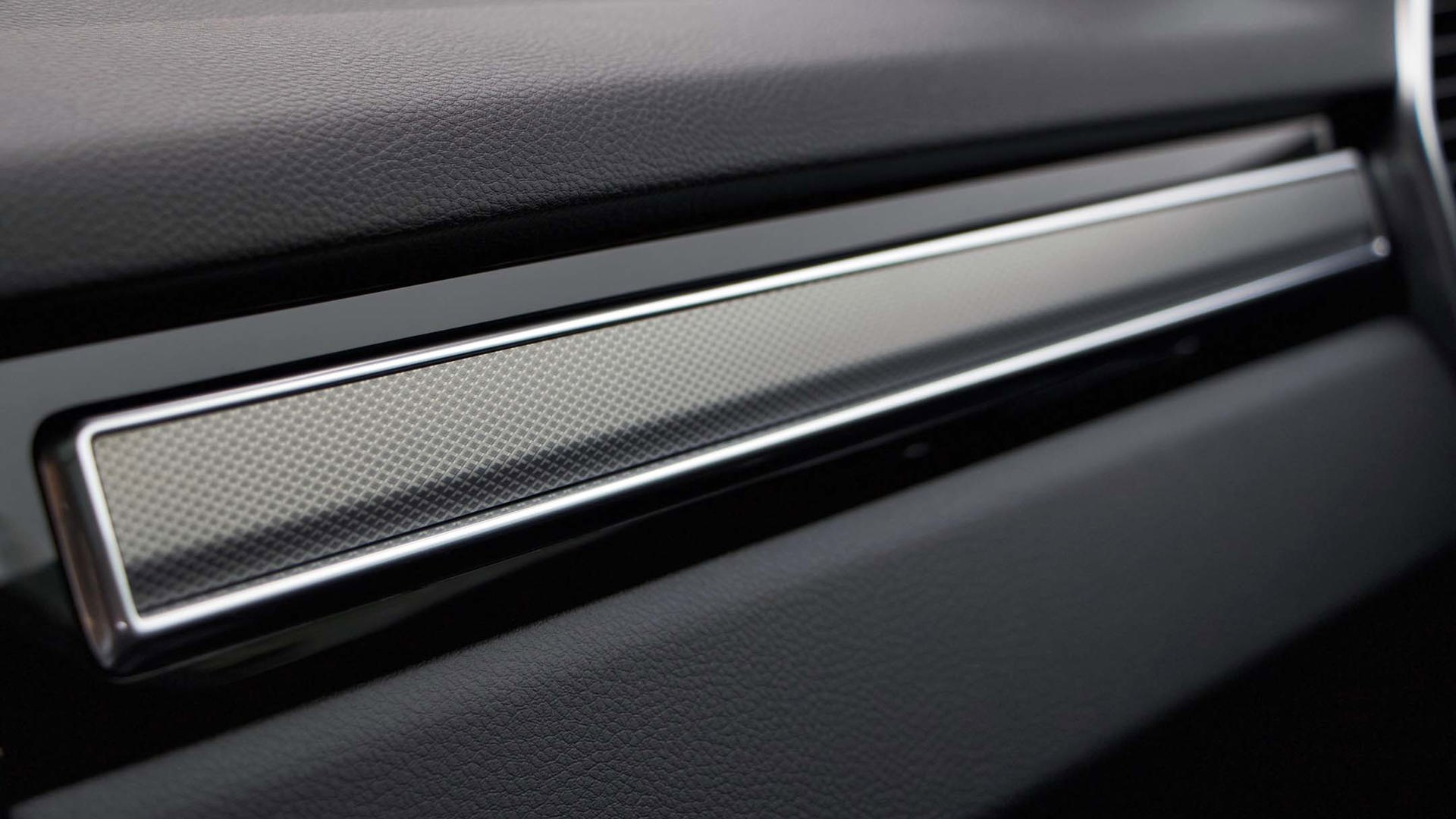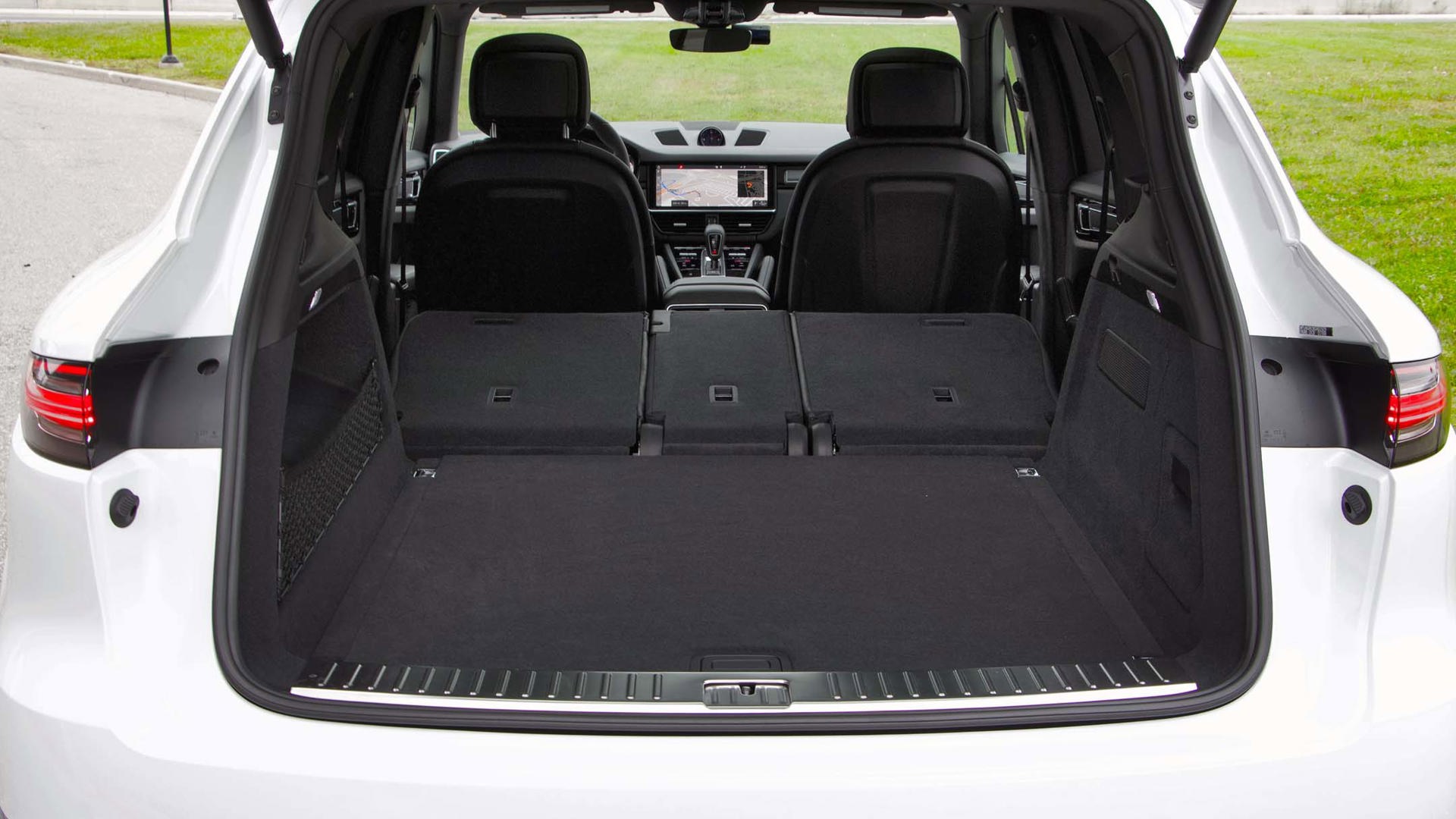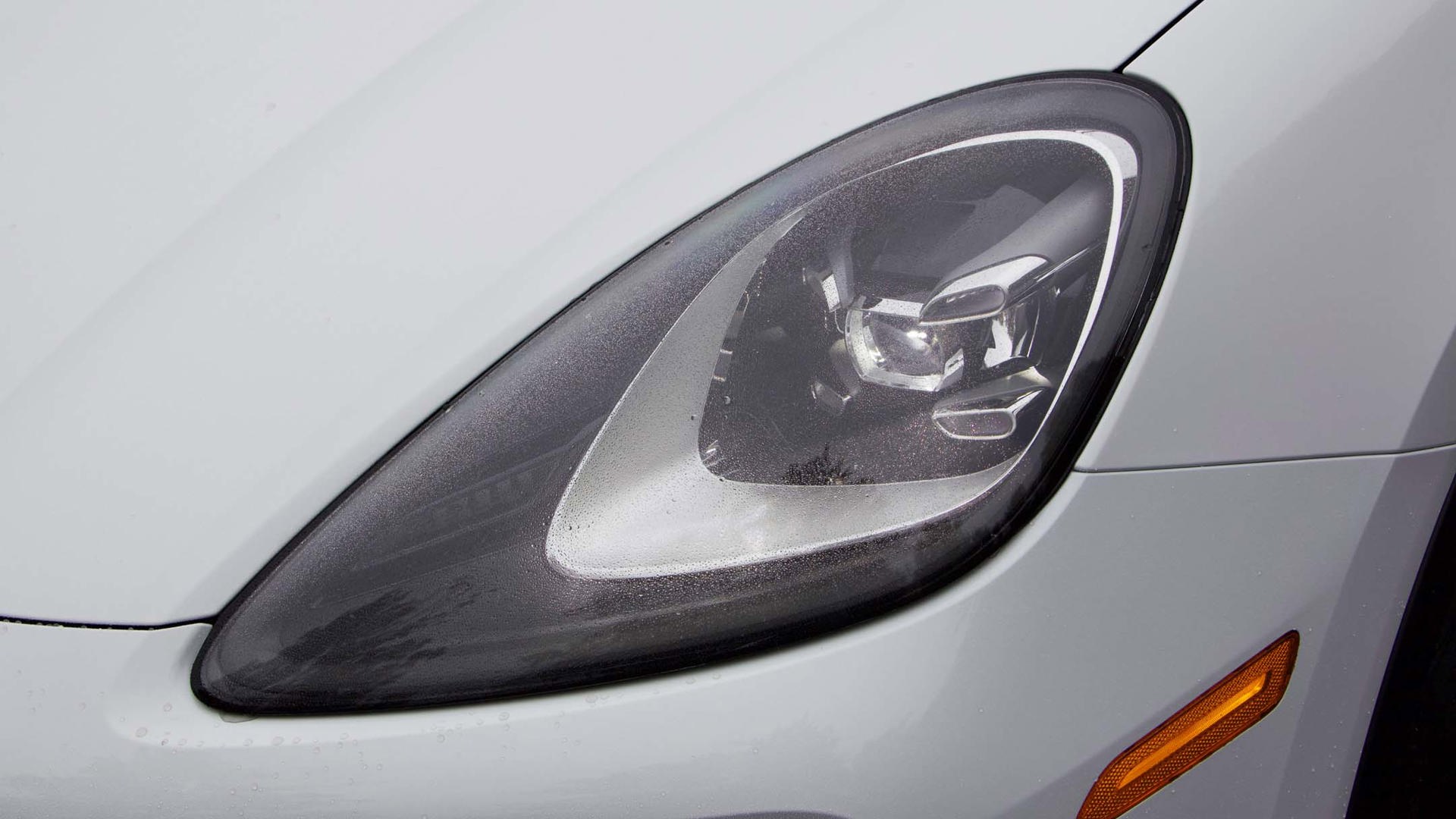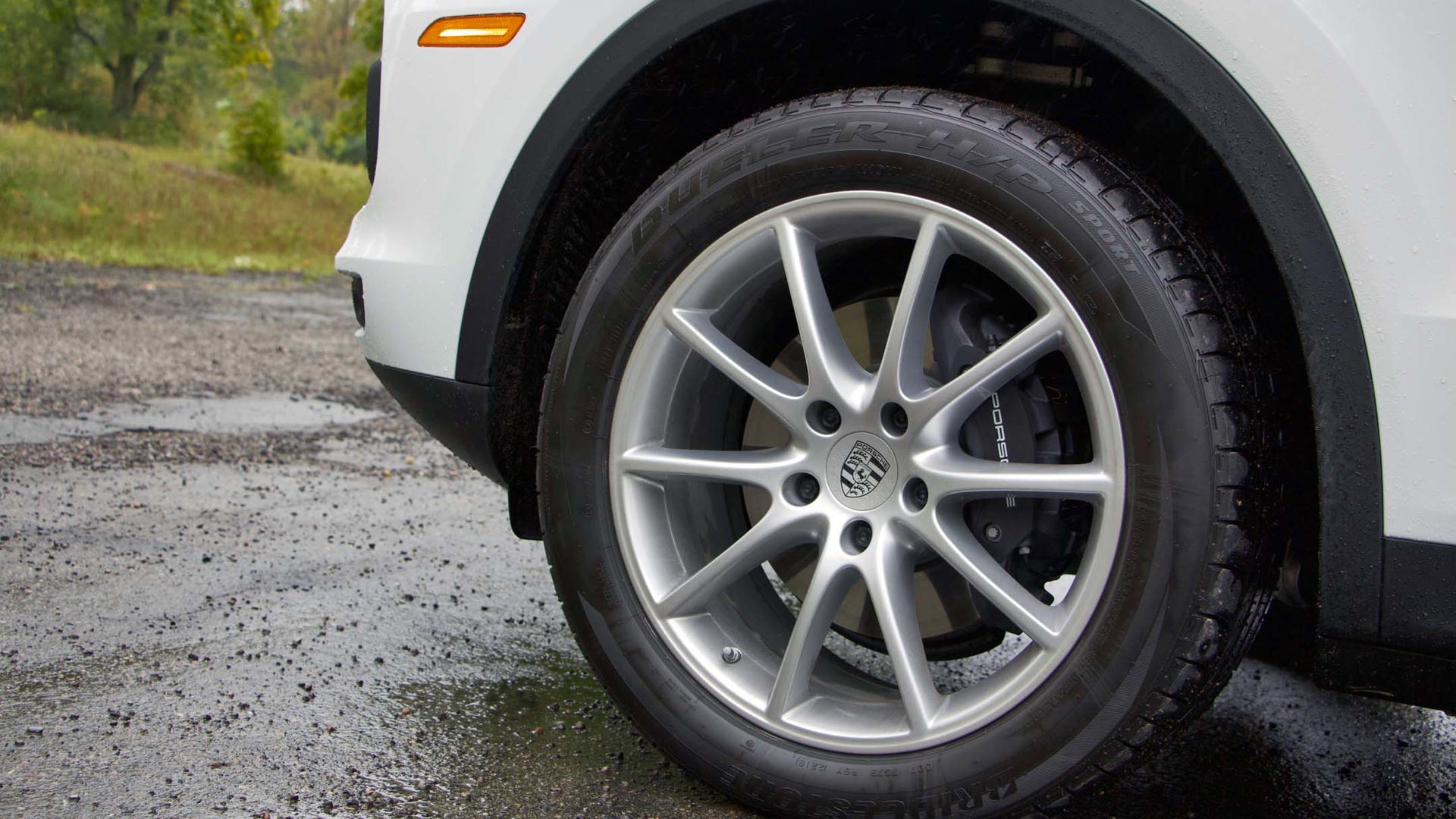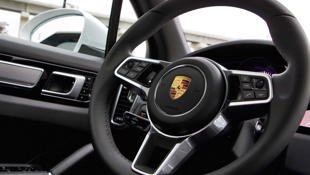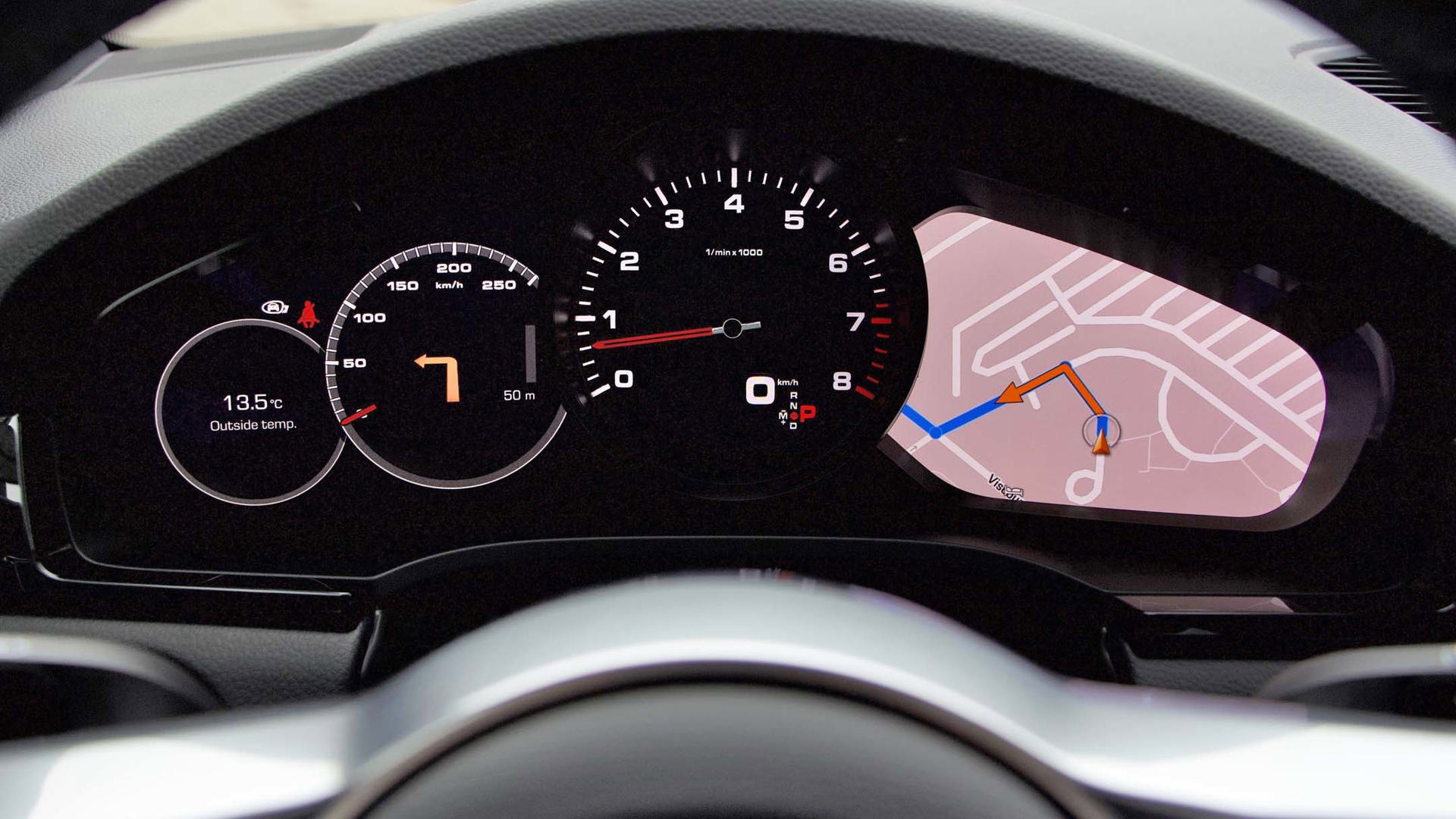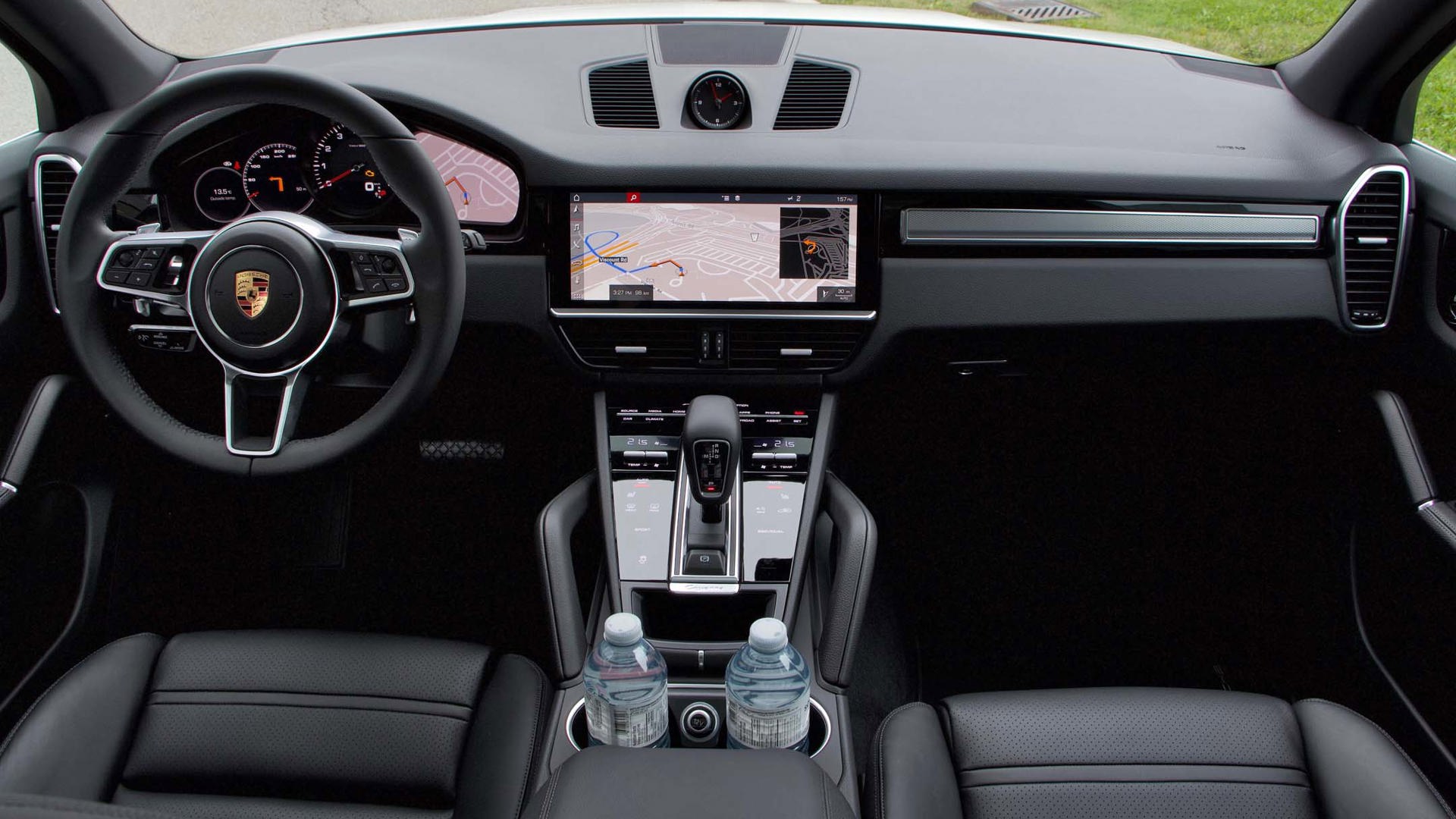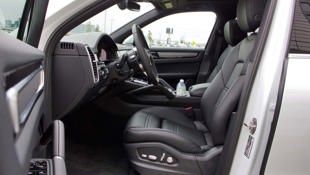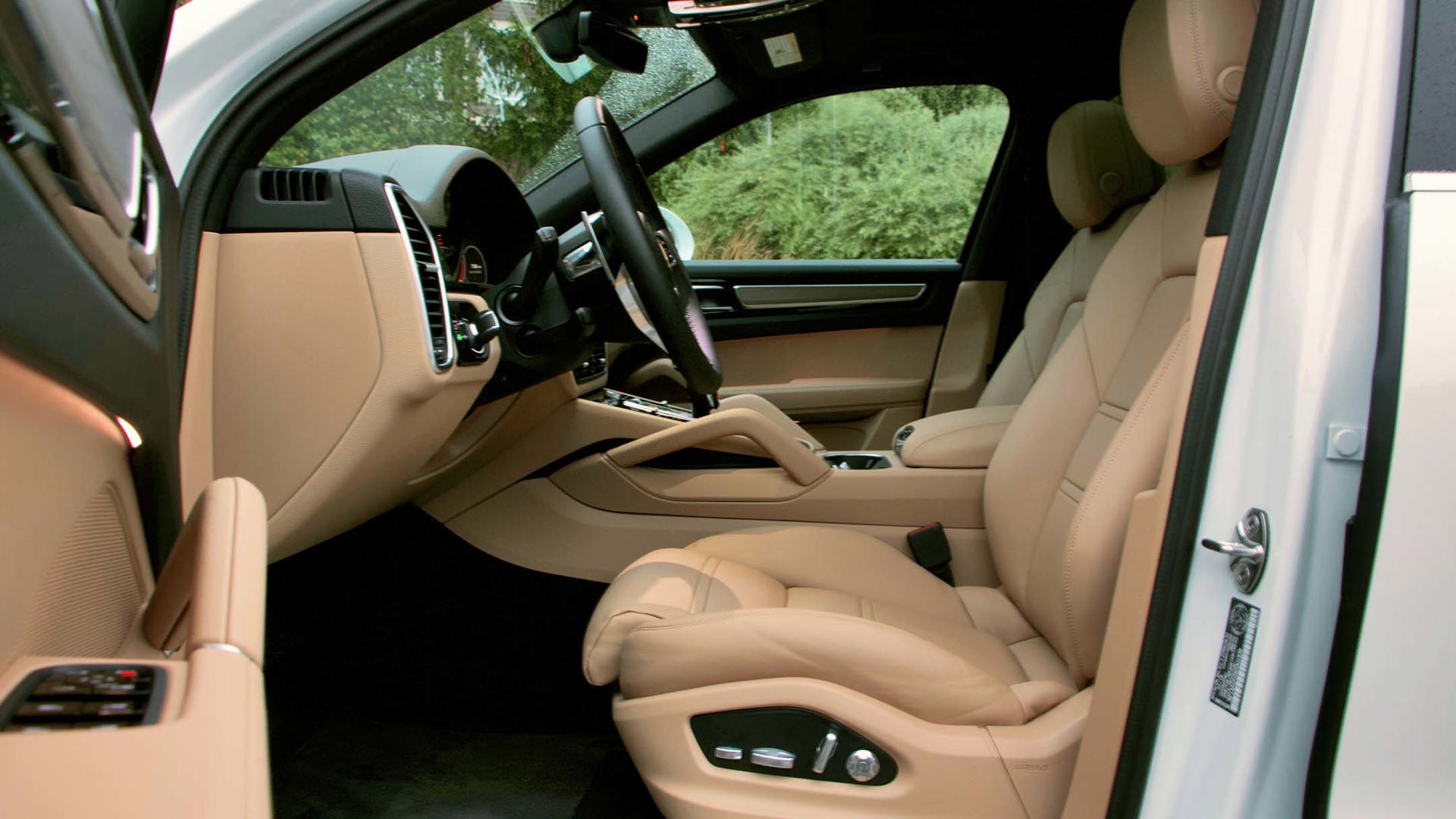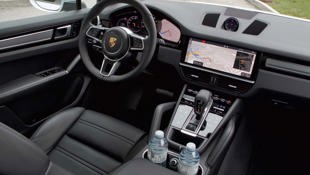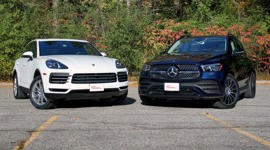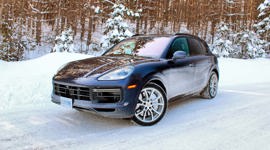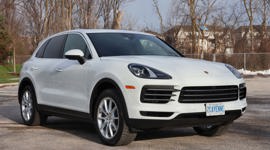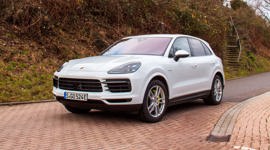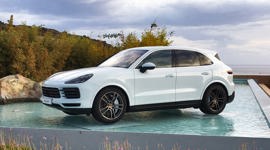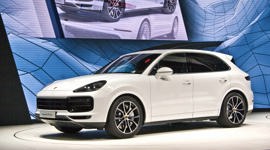Do you remember when the first Cayenne came out? We were barely clear of the great Y2K technology meltdown, the food was terrible and the music was worse, and Porsche sold out by building one of those horrible-handling utilitarian vehicular jobs to betray everything that was good and pure and Porsche that St. Ferry stood for. No? That doesn’t sound quite right, does it?
Even the most basic model lives up to the standards Porsche has set in the luxury SUV segment.
Okay, the music was terrible and I still thought alternating between Burger King and Taco Bell and KFC was a balanced diet, but that’s neither here nor there. Porsche traditionalists that didn’t like the idea of families and regular people driving Porsche SUVs can now thank all those Cayenne buyers for things like the manual-only Cayman GT4 and insane GT2 RS, because who knows if Porsche would have made it out of the financial hole they were in if not for that Cayenne. The original Cayenne was an instant success despite an ugly design, and probably too expensive because of overkill off-roading chops, but people wanted it and the hordes bought it, conquering ritzy neighbourhoods and boutique-lined avenues, especially in climates where one has to power through deep snow drifts during long, cold winters. Like Canada.
With each successive update and redesign, it only got more and more popular, and 16 years later it enters its third generation, the first Canadian models trickling into Porsche dealers nationwide as I write this, again looking slightly better, but still just about the worst-looking SUV in its segment. Everyone will have their opinions, but I would rank Land Rover, Jaguar, BMW, and Mercedes SUV designs all ahead of the blobby, wind-tunnel-sleek Cayenne. While I’m no fan of the design, it definitely has a sporty stance from some angles, and the fluid, aerodynamic curves suggest the speed it’s capable of. That sheet metal is now made entirely from aluminum, reducing weight and increasing rigidity, despite growing longer, wider, and lower on this entirely new platform.
Mechanical Changes
The Cayenne always was a step ahead in handling, and Porsche is aiming to maintain that edge, even with the new BMW X5 and Mercedes-Benz GLE coming to market soon. The base 2019 Cayenne weighs in at 1,985 kg, which is 55 kg lighter than the 2018 base model, helping it become faster, more agile, and more efficient. It’s also a couple hundred kilos lighter than the Audi Q7 and upcoming BMW X5, but Porsche still went looking for more ways to make their big utility vehicle handle as well as such a vehicle could while still offering at least 21 centimetres of ground clearance and half a metre of water-fording ability (the optional air suspension offers even more off-roading clearance).
To go along with the stiffer aluminum body, the front suspension switches from double wishbone to multilink like the rear to maintain better contact with the road and steering response. They didn’t stop there, adopting a staggered wheel setup even on base models, with standard 19-inch wheels (up from 18s on the previous generation) – 8.5 inches wide at the front and 9.5 inches wide at the back – helping to balance grip in cornering.
While all of the powertrains received significant revisions, we sampled only the base-model Cayenne on this trip, which gains a huge leap in power to go along with those significant weight savings. Replacing the naturally aspirated 3.6L V6 is a turbocharged 3.0L V6, power rising from 300 to 335 and torque not only jumping from 295 to 332 lb-ft, but also delivered over a thousand rpm earlier at 1,840 rpm. Although the transmission appears unchanged, listing an eight-speed automatic transmission, Porsche switched suppliers from Aisin to ZF, not just for the quicker gear changes but also a more refined stop-start system in traffic.
Driving Impressions
Porsche didn’t need to get too aggressive with the base model, but they did anyway, and the changes add up to a big improvement in acceleration, now hitting 100 km/h in 6.2 seconds compared to 7.7 for the previous generation. The Sport Chrono package unlocks another level, bringing that sprint under six seconds. Porsche was happy to point out that that is as fast as the original V8 Cayenne, but that’s is also the way the segment is moving, even these big, heavy utilities needing to achieve heady levels of acceleration to keep up with the competition.
On the road, it simply feels comfortable pulling off a shoulder of a rural side road and topping 80 km/h to match the speed of traffic without any stress. Stuck behind a truck? No worries, because the transmission is quick to read your stomp on the right pedal as a signal to downshift few gears and launch past it without distant oncoming traffic ever becoming a concern.
When the road starts to wind, the Cayenne steering is nicely balanced, and I found it had a little more weight than is typical for an SUV. Turn-in was quick and consistent, the body eventually leaning ever so slightly and the tires squeaking on the rain-slick pavement signalling me to ease up. The chassis feels nicely balanced and composed throughout the process, promising substantially more capability in the right hands, and those kind of hands might want to opt for the Porsche Torque Vectoring package which adds a rear limited-slip differential to the all-wheel drive for better traction powering out of corners if you’re into that kind of thing in your two-ton SUV.
More likely, you’ll be navigating broken downtown pavement and construction zones, and the Cayenne’s base suspension smartly muffled any sharp impacts. It still rides firmly, and bumps are felt but not severe, and body quickly settles down and returns to a smooth ride without any wallowing or getting bounced around.
It would take an incredible amount of recklessness to overstep its grip and lose control, with stability control and superb braking at every corner. Braking also has two levels of upgrades, either coated rotors with upgraded pistons or the full carbon-ceramic package that would be overkill for most typical duties around town and even carving up backroads. The coated rotors cost half as much but greatly reduce brake dust in addition to the added stopping power, so that’s actually a nice perk.
At the end of your drive, parking should be trouble-free thanks to decent overall visibility, front and rear parking sensors, and a rear camera projected on the central display, plus an option for a 360-degree parking monitor, as well as an app-based parking function you can use to park and extract your car in a narrow spot or garage from outside the vehicle.
Luxury and Tech in Harmony
The interior is also a long stride forward from the previous Cayenne, and a simple step up to get into. Perhaps one of the most frequent uses of the air suspension will be its lowered height for ease of entry, but the standard suspension is a friendly height to sidle into, though small kids might have a bit of a climb.
The front seats are power adjustable in at least 10 different ways, with three memory settings, and the rear seats are adult-sized, with plenty of leg and headroom, reclining seatbacks, and adjustable headrests for a an extra bit of comfort. Those rear seats also fold flat in various different configurations thanks to a 40/20/40 split, taking the Cayenne trunk from 770 L (which is 100 L more than the last generation) to a maximum capacity of 1,710 L. If the trunk isn’t enough or you need to tow your Cayman GT4 to the local circuit for PCA track days, it retains its 3,500 kg (7,700 lb) towing capacity. Utility, check!
But of course, a Porsche cannot live by practicality alone, and on top of its performance and practicality, it must deliver a level of luxury and convenience befitting its $75,500 base price. The interior follows the Panamera redesign, with a sleek panel surrounding the chunky shift lever and huge touchscreen infotainment system giving it a futuristic high-tech feel. The Cayenne distinguishes itself with more horizontal layering, taller dash, and big, sturdy grab handles on the console and door for when your passenger needs to hold on for dear life as you clamber through inhospitable terrain and over rocks or curbs at a parking mall. The leather is nice (though option packages offer higher quality) and the plastics and switchgear are refined and work well enough, but the layout still takes some getting used to, unless you’re coming from a previous-generation Cayenne or Panamera.
The “buttons” on the console panel offer haptic feedback and an audible click so you know you’ve achieved success, but if you haven’t ordered all the options, you get to see ghostly little icons of all the features you’re missing out on, a new-school version of blank buttons. The touchscreen is impressive, 12.3 inches in size with high-resolution graphics for accessing all the usual functions like phone, navigation, and music, but now adding connected services like real-time traffic, in-car Wi-Fi, and over-the-air software updates. Many functions can be accessed via the steering wheel controls with information displayed on twin seven-inch displays in the gauge cluster flanking the central tach, and the latest generation of natural-speech voice command should make it easier to simply tell your Cayenne what you want.
Porsche is clever about being ready for the future while not overlooking the present, with both USB and USB-C connections for older and new devices. There are several options in the pipeline as well that we didn’t get to test, like a new laser-projection head-up display, semi-autonomous Porsche “InnoDrive” adaptive cruise and traffic jam assist.
The Value Proposition
Those of you up on your Porsche pricing may have noticed that the 2019 Cayenne’s $75,500 starting price (plus a $1,250 destination charge) is over five grand more than the 2018’s $69,900 and $4,000 more than BMW’s new X5. Adding options will quickly escalate the price, but in the modestly equipped vehicles we drove, the few options that were added aren’t what gave the Cayenne its luxury and quality. The base powertrain is totally competent, the handling and comfort are smartly balanced to reflect the Porsche brand, and you don’t have to order any upgrades to get a quality leather interior with a big touchscreen and classy, high-tech cabin in a variety of colour choices and trim accents.
Although I haven’t entirely come around on the Cayenne’s design, I can admit that the third generation looks much better than the original, and can see how it would speak to different tastes. Even so, the Cayenne drives well enough and offers decent value as these things go in this segment, which has been climbing in popularity for several years and will likely continue to grow.
The 2019 Porsche Cayenne is a promising start for the first of a new generation, with more powerful S and Turbo models to follow in quick succession, hybrid powertrains on the horizon, and a new “coupe” body style set to join the family. There will be a Cayenne for almost any taste and many price points over $75K, but even the most basic model lives up to the standards Porsche has set in the luxury SUV segment – practical and capable in any condition, sporty and competent for a driver who likes to push a car’s limits, but comfortable for family life.
